Samsung Q70D performed in the test just as it should for its category – very well. The strongest points of the television are undoubtedly its efficiency when using a console and the colour reproduction after undergoing the calibration process. The former will certainly not allow gamers to remain indifferent to the range of benefits that Samsung Q70D can offer, and there are indeed many, including this almost exclusive feature for the manufacturer’s units – the ability to smooth out gameplay while maintaining a reasonable input lag, which allows titles running at 30 fps to perform like those at native 60 frames per second. In the context of gaming, one cannot forget the well-implemented HGIG mode, which, when correctly set up, is on par with games using Dolby Vision. One should also not overlook the ease of pairing the television with the Canal+ decoder, which is not such an obvious advantage, but we know that many people struggle with this issue. Staying on the topic of television, it must be acknowledged that the Samsung Q70D offers very good brightness in SDR materials for its price range, making daytime viewing more than comfortable. A downside for the tested television has to be the lack of Dolby Vision, which would have greatly enhanced the maximum brightness of the Samsung Q70D. One should also not overlook the construction flaws of the device, which may (though not necessarily) lead to light bleed, which can be noticed in dark conditions on less bright scenes. What cannot be taken away from Samsung Q70D is the fact that it features one of the better motion smoothing technologies in its price range, which works excellently in the context of sports events or fast-paced action scenes. The system that operates the television runs very smoothly, and the only complaint one might have is the lack of the Tidal app. In summary, the Samsung Q70D is a good continuation of the manufacturer's seventh series, which year after year gains – both in quality and popularity.
- Matching (Score)
- Our verdict
- TV appearance
- Where to buy
- Contrast and black detail
- HDR effect quality
- Factory color reproduction
- Color reproduction after calibration
- Smoothness of tonal transitions
- Image scaling and smoothness of tonal transitions
- Blur and motion smoothness
- Console compatibility and gaming features
- Input lag
- Compatibility with PC
- Viewing angles
- TV efficiency during daytime
- Details about the matrix
- TV features
- Apps
- Playing files from USB
- Sound
Samsung QLED Q70D / Q74D / Q77D vs Samsung Q8F
Direct compare
Q70D / Q74D / Q77D

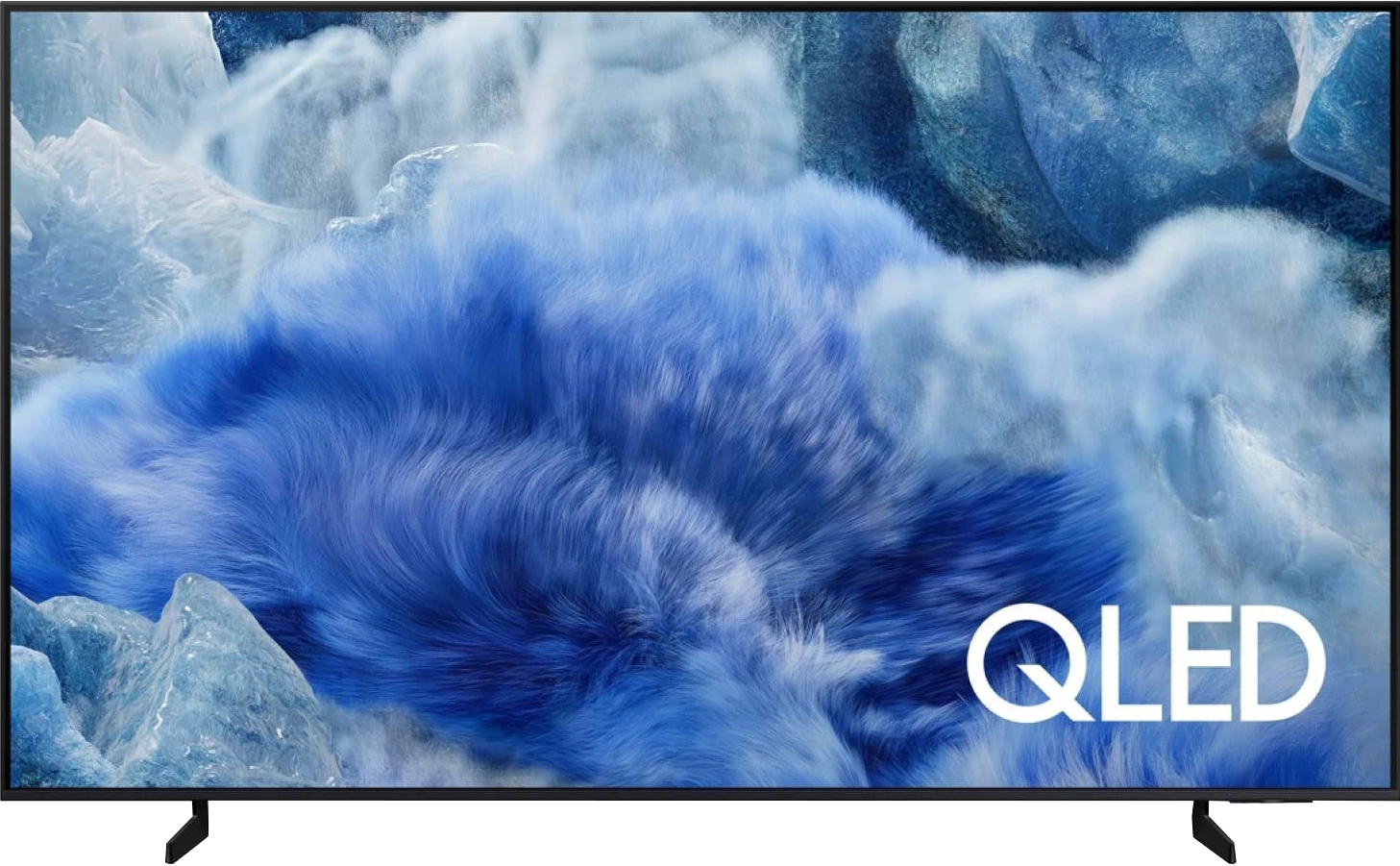
Panel type: LCD VA
Resolution: 3840x2160
System: Tizen
Model year: 2024
Complete the survey to find out the result

Panel type: LCD VA
Resolution: 3840x2160
System: Tizen
Model year: 2025
Complete the survey to find out the result

Overall rating
6.8
6.3
Movies and series in UHD quality
6.1
6.3
Classic TV, YouTube
6.0
6.0
Sports broadcasts (TV and apps)
6.5
5.1
Gaming on console
8.7
6.9
TV as a computer monitor
8.0
6.0
Watching in bright light
5.4
5.6
Utility functions
7.4
7.3
Apps
8.7
8.7
Sound quality
6.3
6.0
Complete the survey to find out what fits your preferences
Advantages
Excellent performance with consoles and computers
Colour reproduction after calibration
Very good performance in sports - advanced motion smoothing system
Smooth and trouble-free operation of the Tizen system
Very good tonal transition quality in this budget
Solid contrast thanks to the VA panel
Quite good brightness in SDR and HDR (up to around 500 nits)
Satin finish handles reflections well
Tizen operating system – fast, intuitive, with a rich selection of applications
Solar remote with USB-C charging
Integration with the SmartThings ecosystem
Excellent input lag
Good font readability when working with a PC, suitable as a monitor for text tasks
Adjustable stand on multiple planes
Disadvantages
Possible noticeable light leaks
Dolby Vision support not available
Severely limited features for gamers (no VRR in practice, no HGiG)*,
No USB recording or PiP functionality
Average digital image processing
*We hope that the promises on the promotional brochures will be quickly fulfilled through software updates.
Our verdict
Samsung Q8F is quite a successful continuation of the Q67D model. It offers similar image quality in HDR content, and with a brightness of around 500 nits, it can create an effect that is hard to call average. The support for the HDR10+ format also helps, as it has been realistically competing with Dolby Vision for some time and delivers comparable experiences in many productions. The contrast is another positive aspect – for a VA panel, it performs solidly and allows for enjoyable blacks in films and series. However, the greatest advantage of the Q8F remains the operating system. Tizen operates quickly, provides access to many applications, and works well with the SmartThings ecosystem, allowing the television to easily integrate into a larger network of home devices. Interestingly, the Q8F also has a niche application – thanks to its very good font readability, it performs excellently as a screen for working with text. Additionally, there is an adjustable stand that allows the television to be set on practically any desk or narrower TV cabinet. The biggest drawback, in our opinion, is not the image quality itself – as it is difficult to expect miracles in this price range – but rather what has happened to the gaming features. Options such as VRR and HGiG have disappeared with updates, which were available even in simpler constructions in previous generations. Indeed! The manufacturer even boasts about the availability of these features in its catalogue. This makes it difficult to recommend the Q8F to anyone today who plans to connect a console and expects full support for new technologies. Thus, the Q8F is a television that can be appealing – primarily for its design, above-average image quality, and efficient Tizen system. But at the same time, one can see a step backward compared to its predecessor. Let us hope that Samsung will manage to quickly rectify these shortcomings, as otherwise even such a successful 'everyday' television may leave some users with a sense of dissatisfaction.
TV appearance




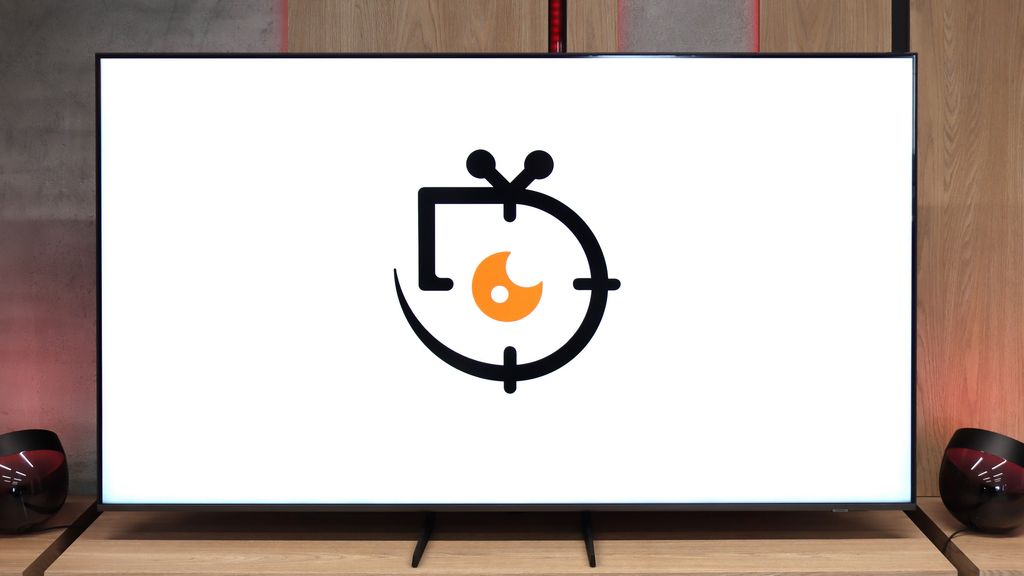
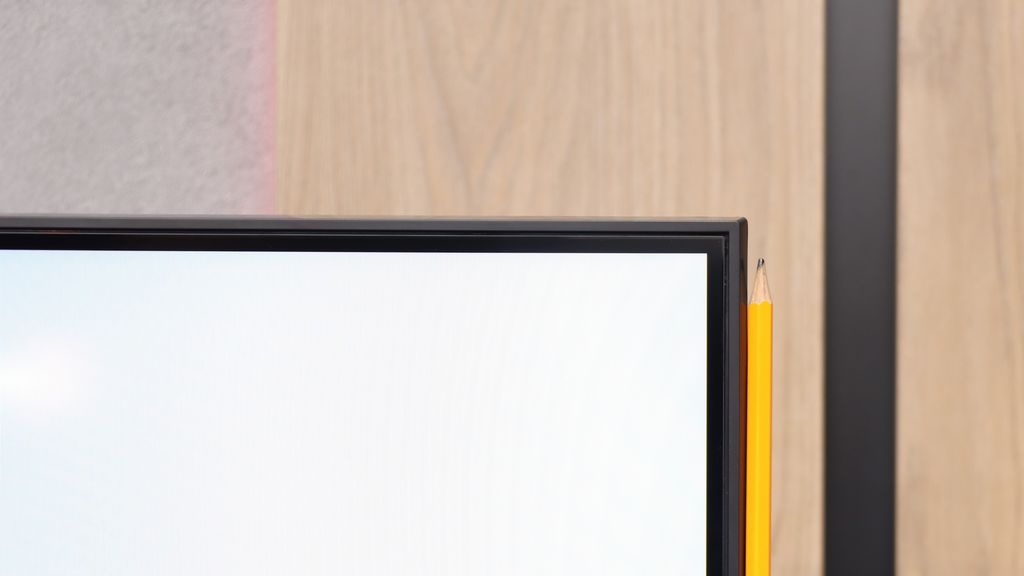
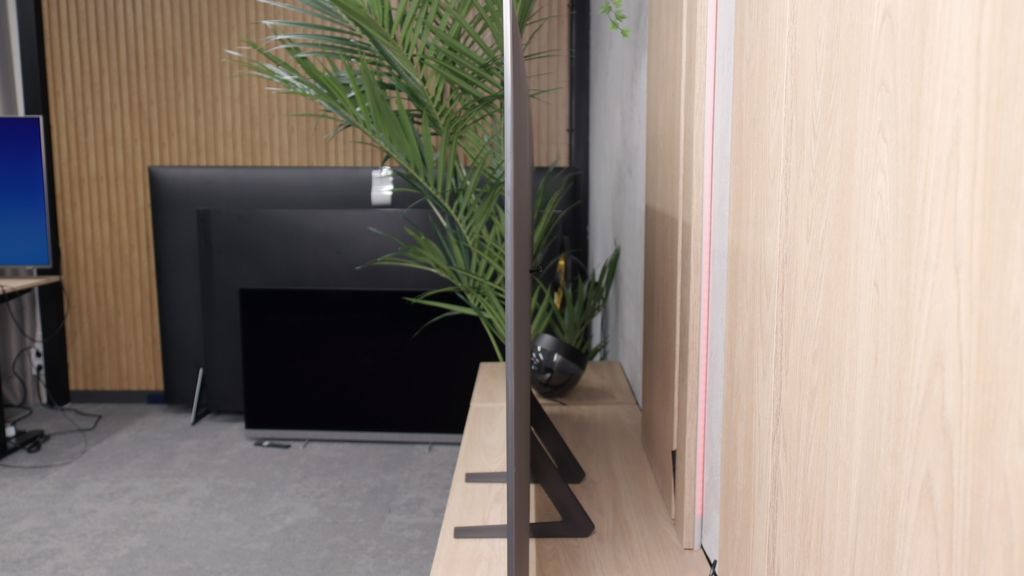
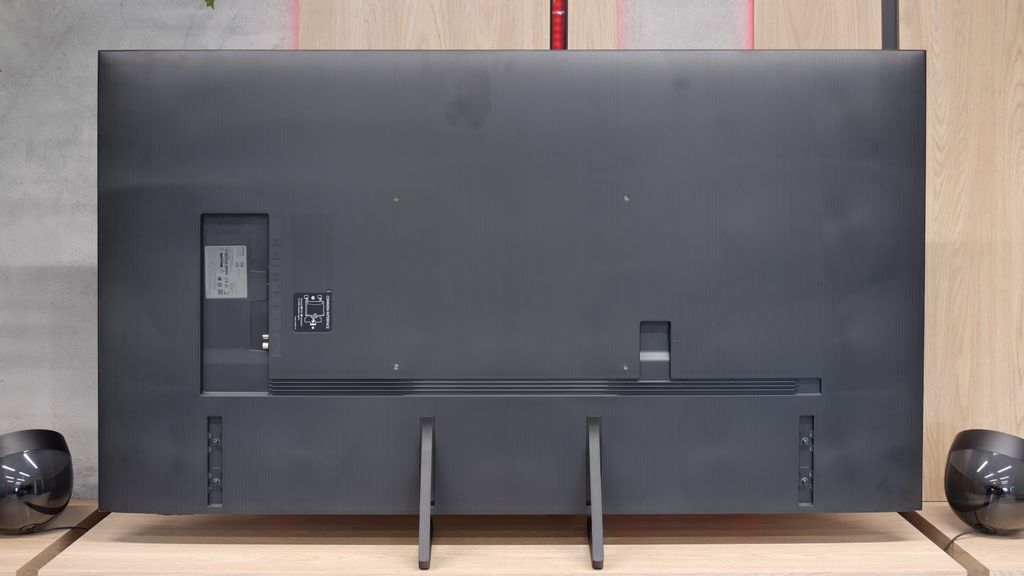
Contrast and black detail
5.4/10
5.5/10
Local dimming function: No
Local dimming function: No
Contrast:

Result
2,450:1

Result
5,150:1

Result
6,550:1

Result
5,850:1

Result
2,800:1

Result
5,200:1

Result
4,650:1

Result
3,650:1

Result
4,100:1

Result
4,150:1
Halo effect and black detail visibility:

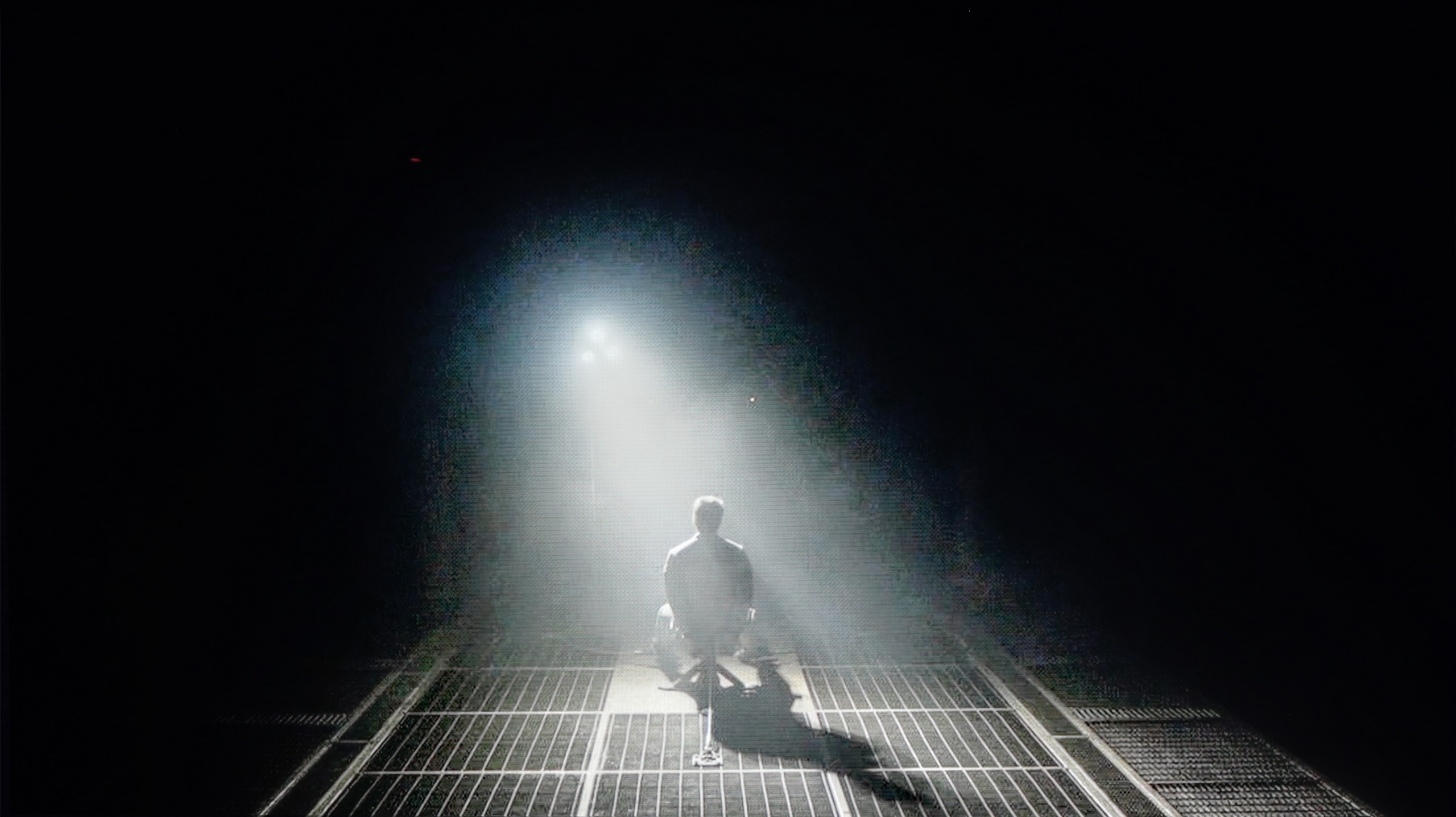

Samsung Q70D and its related models, such as Q77D and Q74D, utilise a VA panel, which in itself should provide decent contrast. Typically, it is several times higher than in IPS/ADS screens that are not equipped with an advanced local dimming system. The contrast results, as you can see, are quite varied, which is caused by the non-uniformity of the panel. Therefore, at times we can achieve good contrast, whereas at other times it is significantly degraded, but generally fairly consistent, not counting light leakage. Let’s take a look at the film scenes we prepared from the films "Oblivion" and "Revenant". As we can see, in the first one, the lights are well separated from each other, which is a positive phenomenon, as visibility of details in the whites in further tests should be equally good. What stands out the most here is the unusual over-sharpening of smoke visible under the light and the navy black in the background. In the frame from the second film, the first thing that stands out is the uneven backlighting of our scene. It was quite significant and heavily affected the perceived image. Nevertheless, the details in the film were well visible.
Samsung Q8F uses a VA LCD panel, which immediately puts it in a good position when it comes to contrast. By nature, such panels offer deeper blacks than IPS displays, and this effect is indeed noticeable here. In the test patterns, the contrast maintained itself in the range of around 4000:1 to even 6000:1, which in practice results in a surprisingly engaging image, especially in a slightly dimmed living room. Of course, it does not reach the level of LCD screens with local dimming, let alone OLED — sometimes the black can shift to a shade of blue, making the overall image appear flattened. However, Samsung employs a simple trick: so-called global dimming, which dims the entire screen when a lot of dark areas appear. The effect can be impressive, but it comes at the cost of losing some detail, which may not appeal to everyone. Despite this, the Q8F still presents itself significantly better than televisions with IPS panels, offering solid contrast and blacks that can draw you into the cinematic atmosphere.
HDR effect quality
5.5/10
5.2/10
Luminance measurements in HDR:

Result
433 nit

Result
461 nit

Result
477 nit

Result
475 nit

Result
490 nit

Result
473 nit

Result
417 nit

Result
457 nit

Result
210 nit

Result
471 nit
Scene from the movie “Pan” (about 2800 nits)


Scene from the movie “Billy Lynn” (about 1100 nits)


Static HDR10


Dynamic: HDR10+
Dynamic: HDR10+


HDR luminance chart:
Samsung Q8F
HDR luminance
Samsung QLED Q70D / Q74D / Q77D
HDR luminance
Luminance of RGB colors
The brightness that the Samsung Q70D can offer is at a fairly average level, although it cannot be said that the HDR effect will be unnoticeable. Any brightness above 400 nits allows for a clear distinction between SDR and HDR materials. As was the case in the paragraph about contrast and black levels, this time we can observe that the first scene, featuring a bright sun and a dark foreground, possesses the lowest luminance among the measured ones. The result, which can be considered very good for this price range and class of display, is the latter. In a scene where we see a large light source filling a significant part of the frame, the brightness of the television is at its highest, reaching nearly 500 nits. It is worth noting the quite low coverage of the wide DCI-P3 colour gamut, which occasionally results in noticeable gaps in the colour palette. Additionally, users can enjoy rich colours and high precision in shade reproduction, making movie screenings a special experience. It is also worth noting that the Q70D Samsung panel performs excellently in eliminating blur during dynamic action scenes, which enhances the viewing comfort of sports broadcasts or games.
In terms of brightness, the Samsung Q8F performs surprisingly well for a television without local dimming. In measurements, it reaches up to 500 nits, which in practice means that most movie and series scenes look pleasing, and it cannot be accused of lacking the 'HDR effect'. In films such as Life of Pi or The Meg, the screen was able to burst with brightness and deliver a light effect at a satisfying level. It struggles more in difficult moments — during dark scenes with individual bright points. The global dimming used causes the television to dim the image to maintain deep blacks, but at the expense of detail brightness. This is clearly visible in the scene from Sicario 2, where the helicopter lights dropped to around 200 nits. This is a conscious design decision that gives the impression of deeper blacks, but somewhat takes away the brightness from individual elements, and one must simply keep this in mind. In terms of colour reproduction, the Q8F uses quantum dot technology, which widens the colour gamut. A coverage of the DCI-P3 palette at 91% can be considered a decent result, although it is not a record-breaking figure compared to other QLEDs.
Factory color reproduction
6.1/10
4.6/10


Factory Mode
After calibration
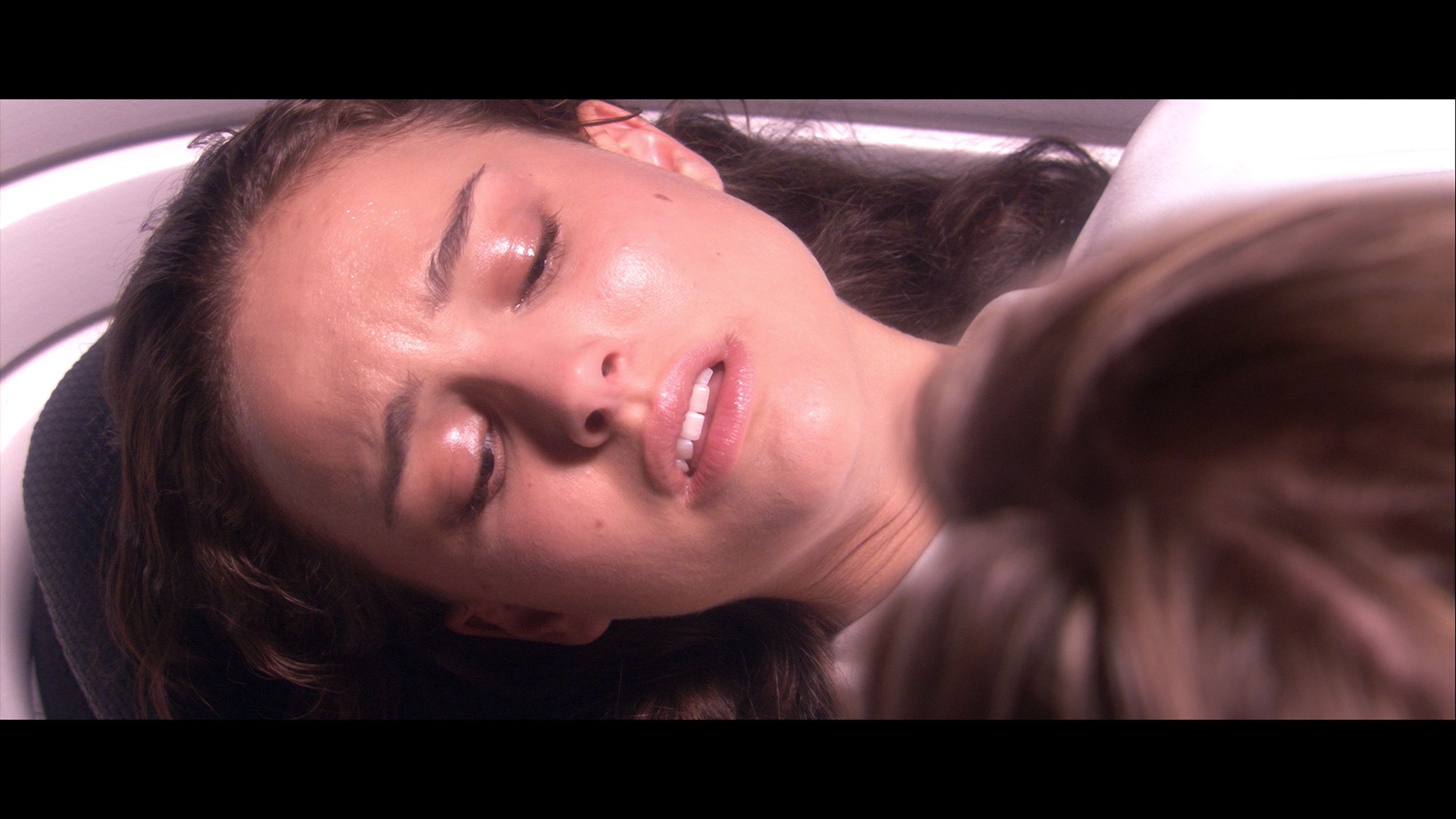
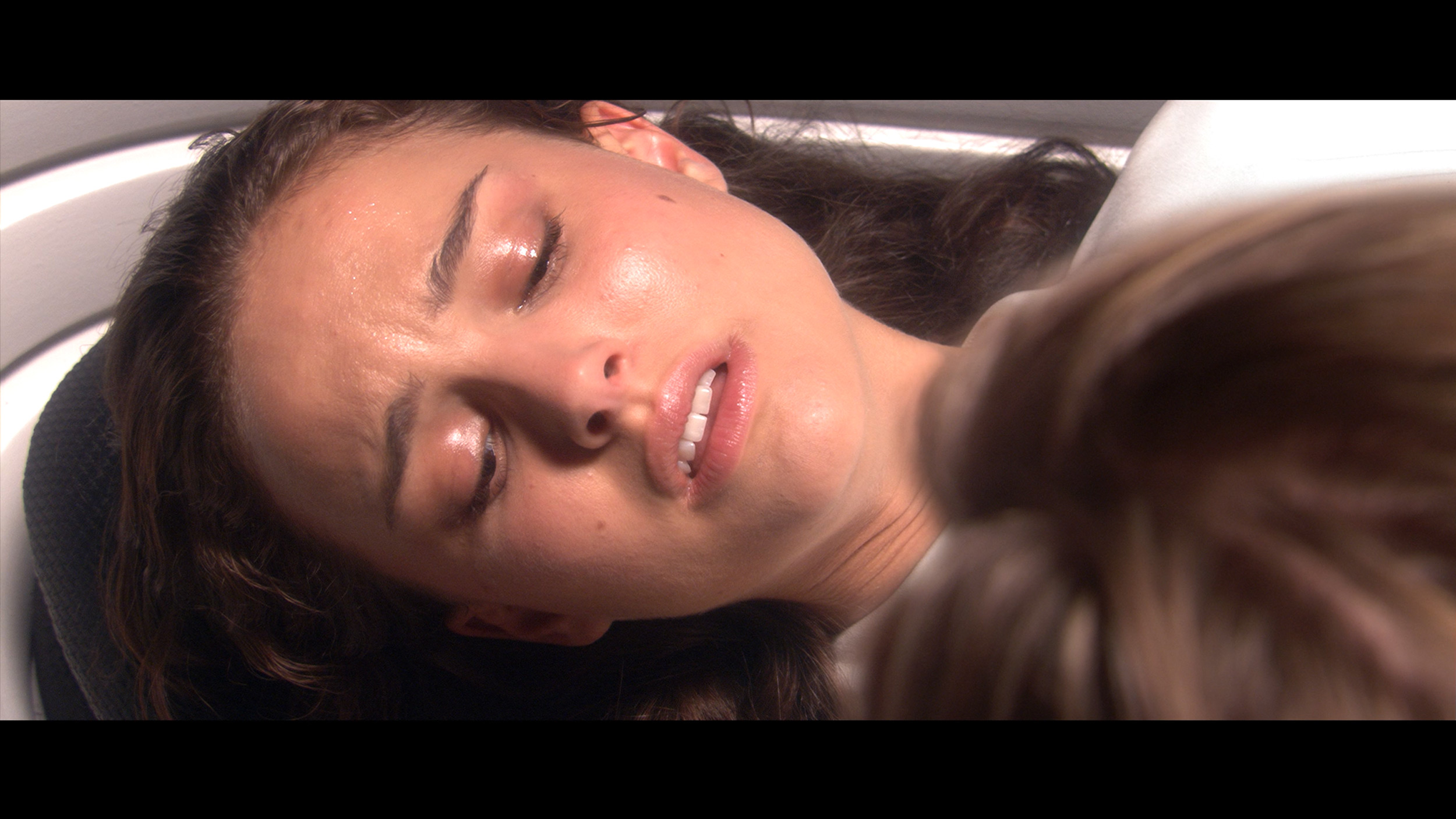
Factory Mode
After calibration
The best factory mode on the Samsung Q70D is "Filmmaker," and it was this mode that we used during all our tests. Before calibration, it had several flaws that effectively prevented it from conveying the director's intentions. In both SDR and HDR materials, the white balance was dominated by red and green. As a result, there was a characteristic yellow tint on the image, causing white to appear yellowed and resulting in skin tones that were noticeably too warm. The lowered gamma in standard colour gamut materials resulted in a significant drop in contrast, which was already not the highest. This caused detail in the blacks to be accentuated but also led to overexposure in brighter scenes. The EOTF curve, in this case, proved to be much better and only brightened those scenes with relatively low luminance. This was perfectly evident in the section where we measured the television's maximum brightness in HDR materials. At that point, the frame from the film "Billy Lynn" was unnaturally bright and lacking in depth.
We decided to check out the Filmmaker mode, as it provided us with the best image straight out of the box. However, this does not mean it was perfect. The white balance had too much blue and red, resulting in the white taking on a slight mauve-pink hue. Such an imbalance affected the visibility of practically all colours, as can be seen in the comparison photo below. The brightness characteristics in SDR content were quite well adjusted, though in HDR material we noticed that the television did not always manage its global dimming effectively — at times the screen was too dim, while at other moments it could suddenly brighten. Fortunately, issues related to colours can be effectively corrected with calibration tools, so we decided to get to work.
Color reproduction after calibration
8.1/10
7.8/10




Fortunately, Samsung provides a wide range of calibration tools in all its televisions, including 2-point and 20-point grey scale adjustment as well as advanced CMS. This allowed us to significantly improve the quality of SDR and HDR content. The vast majority of errors have been corrected, and the image that the Samsung Q70D now generates is definitely closer to the reference. Higher deltaE errors in wide dynamic range content are primarily due to the display's insufficient luminance.
After calibration, we managed to correct the white balance to near perfection. Older SDR content looks fantastic — most errors fall within a value range of 2, which is well below the threshold of perceivability for the human eye. In HDR, we also brought the white balance to an acceptable level, but another issue arises here. So why are there still relatively large errors in colour reproduction? This mainly stems from the limited colour palette and the way the television manages brightness. The global dimming technique used does not give the user control in the settings, so when analysing the EOTF curve in HDR films, it is apparent that the Q8F can modify luminance independently. This can be regarded as a certain limitation, but despite this, the picture after calibration is still much more pleasant to view than in the factory version.
Smoothness of tonal transitions
6.9/10
9/10

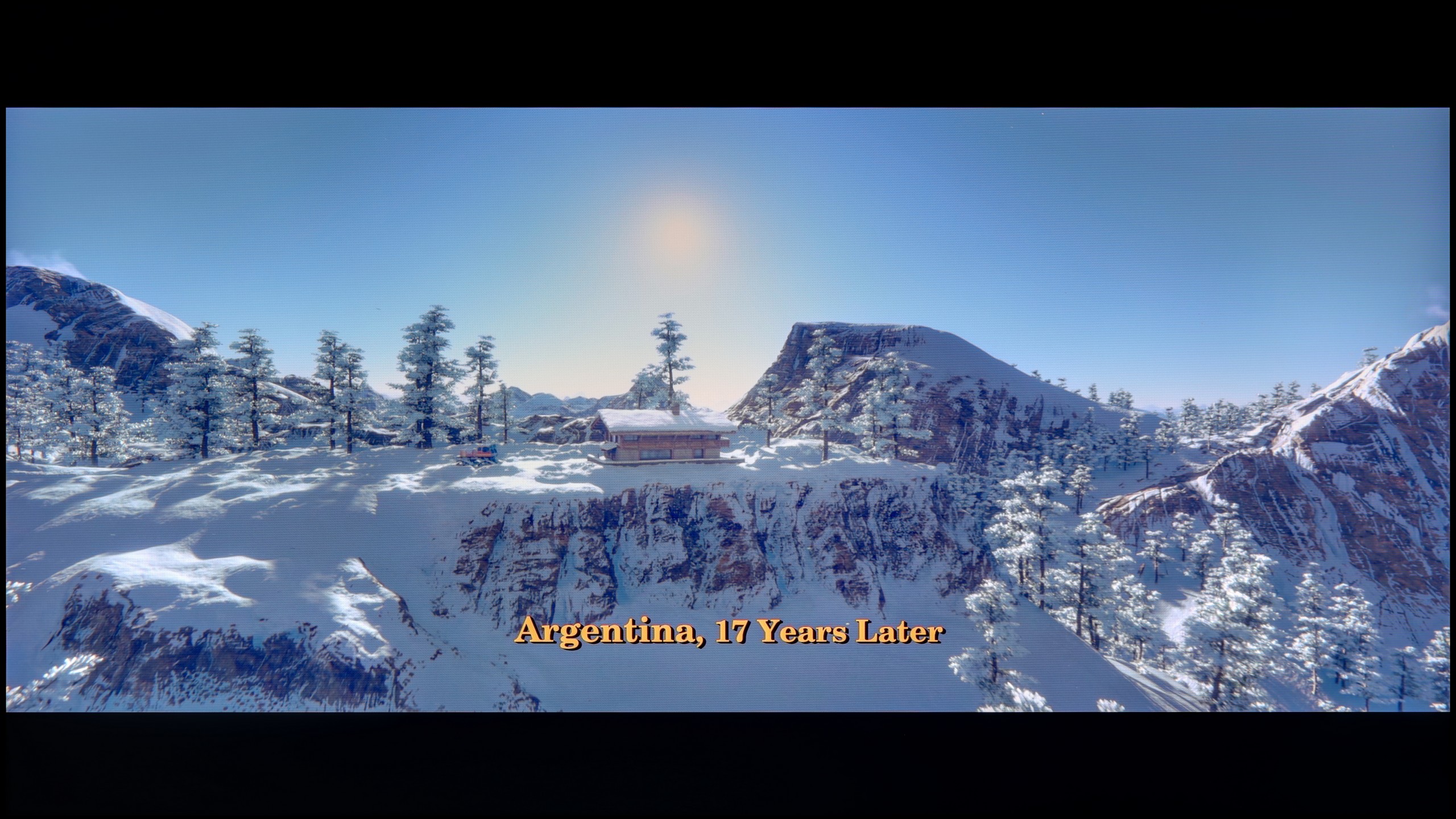



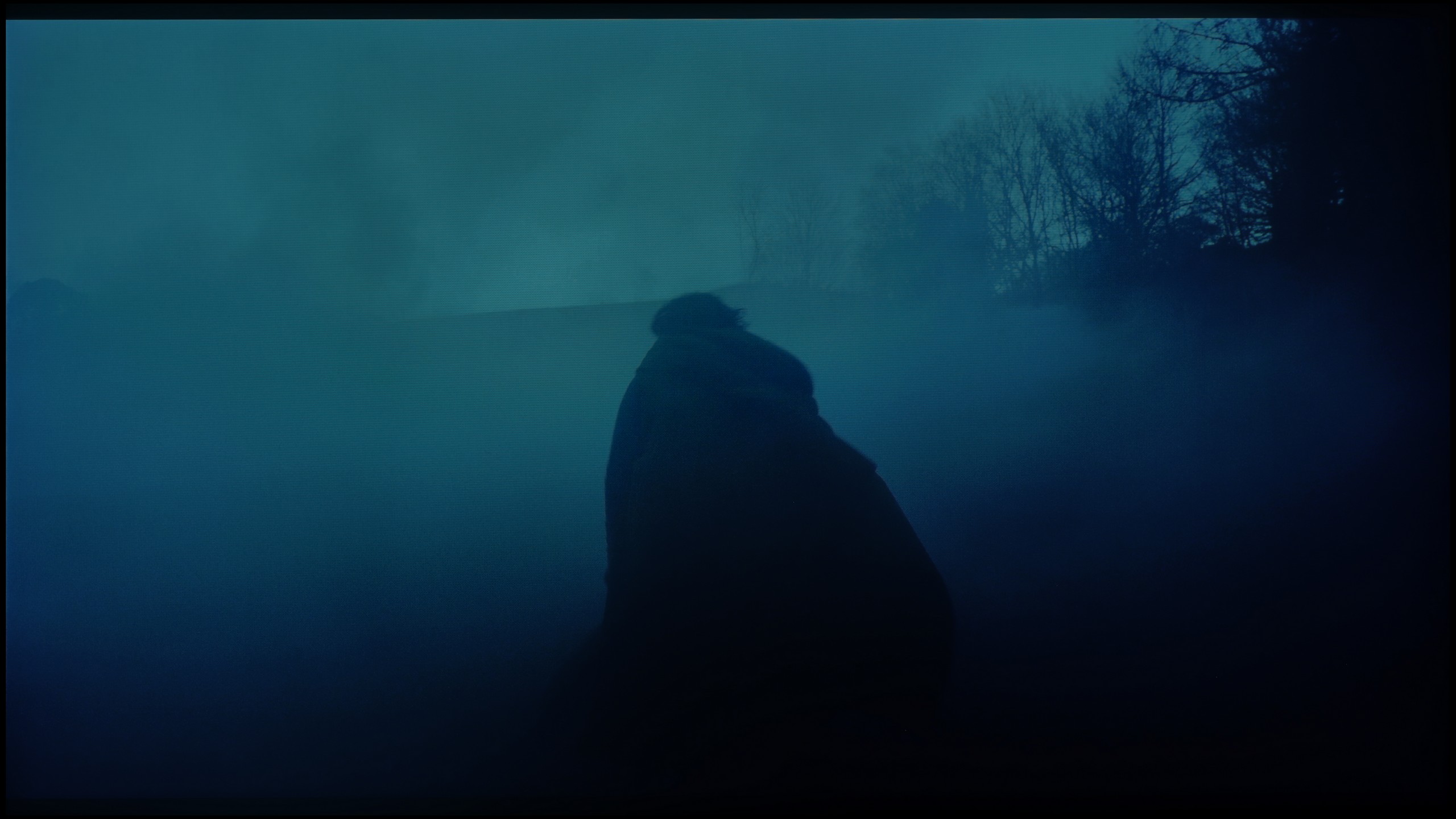

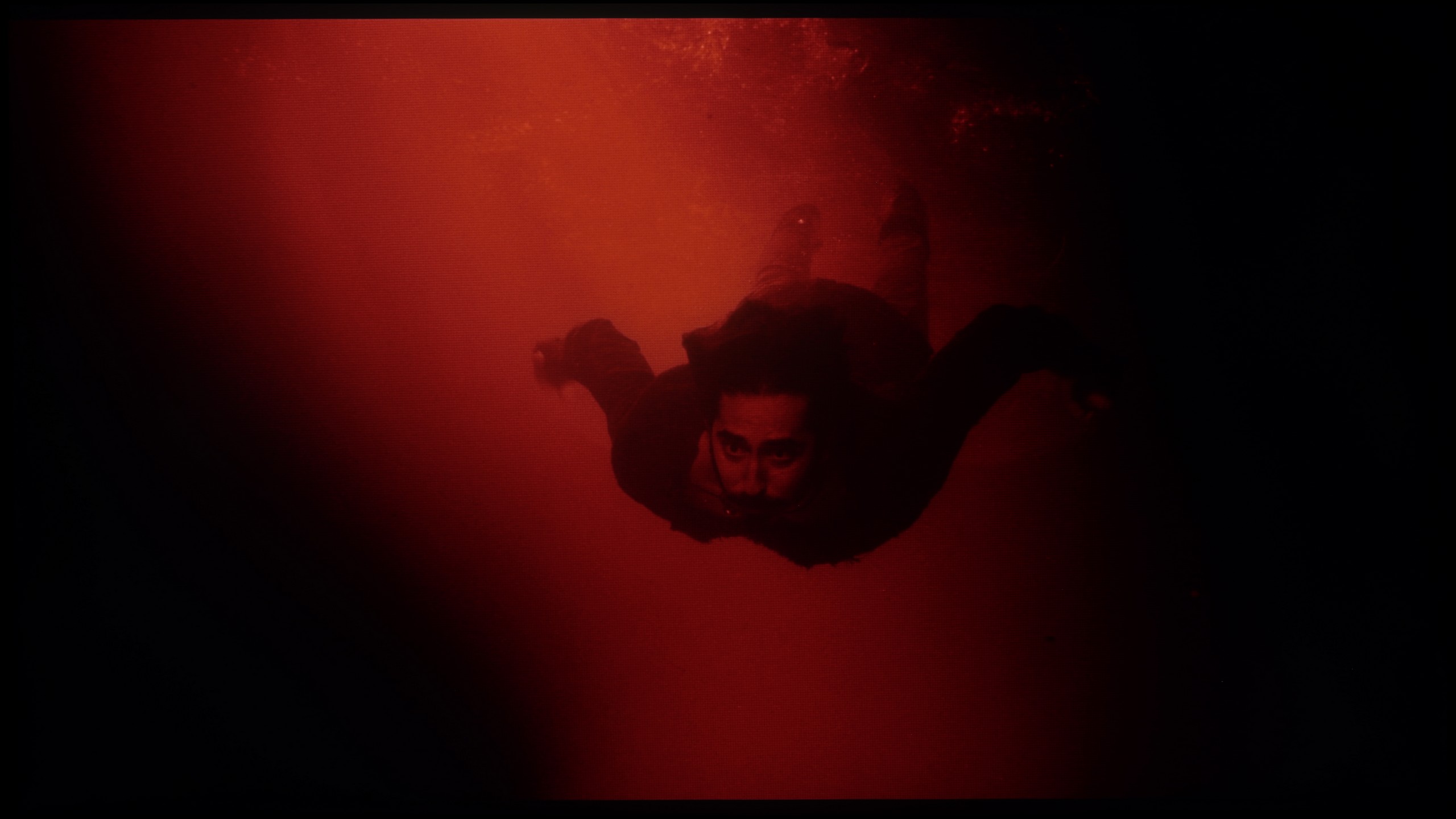




Considering how important lighting is in films and series, the overlapping structures and the fluidity of tonal transitions constitute an extremely significant element in assessing the quality of the image. The colour grading in the tested television stands at a fairly decent level. It cannot be said to be outstanding, but it is also not bad. We assess it as adequate. Brighter scenes perform best here, showing the least amount of stuttering. In scenes recorded in darker settings, slight deficiencies in grading can already be noticed, although this is not an issue that would cause discomfort while watching. This may be disrupted by the bleed of the backlighting, which is clearly visible in the last image.
The fluidity of tonal transitions in the Q8F performs really very well. The television beautifully blends colours, both in bright patches of sky and in darker scenes, where it is easy to spot visible "steps" in colours. Admittedly, there are occasional errors, but you have to look closely to catch them. In practice, when watching films or series, the image appears cohesive and does not distract with any artefacts. Therefore, the rating in this category had to be high. 😉
Image scaling and smoothness of tonal transitions
7/10
5/10
Smooth transition function

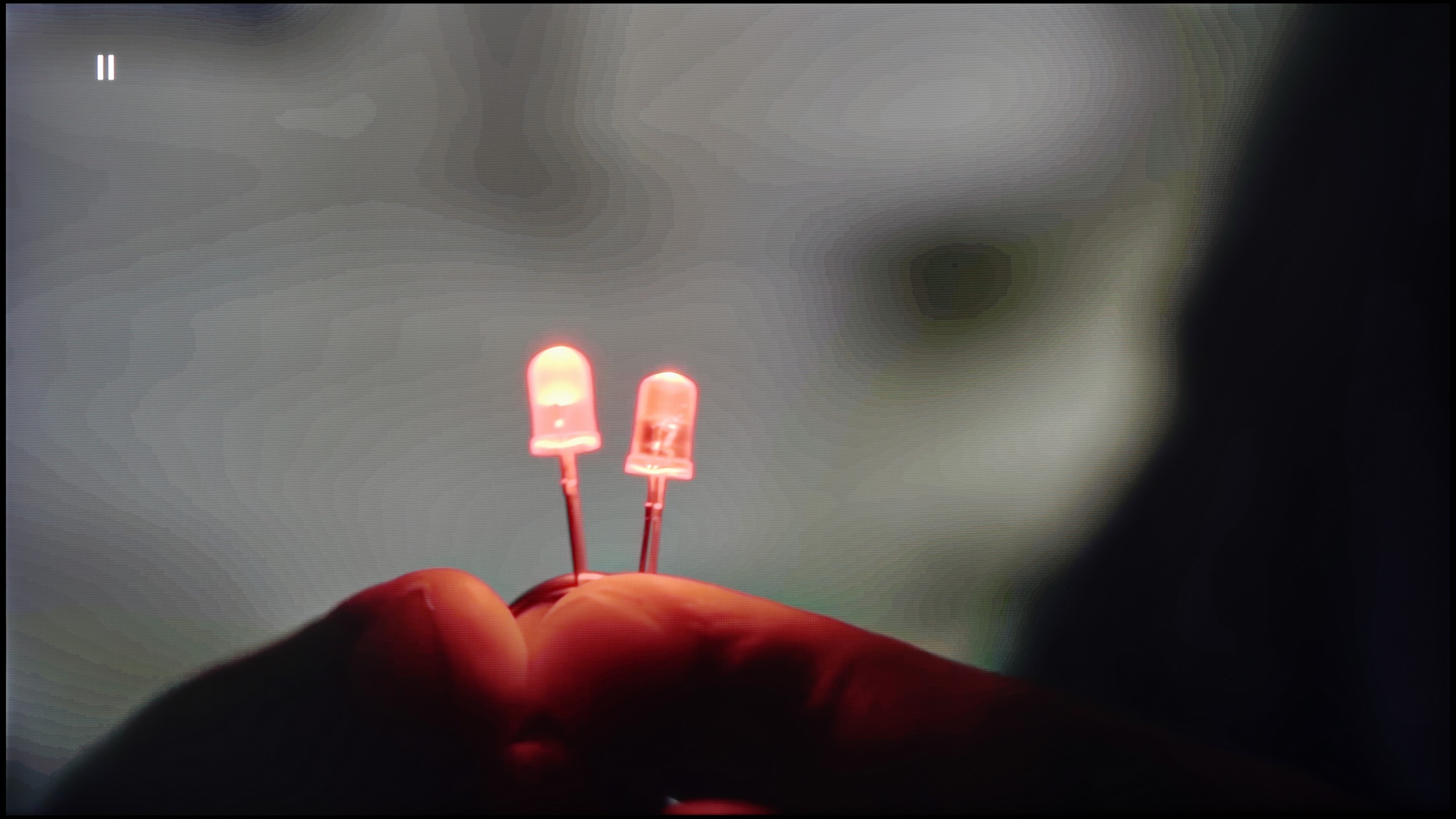
Image without overscan on the SD signal


The function responsible for improving gradation has been named "Noise Reduction" in the menu. As we have confirmed, it is worth enabling, as it has a positive effect on tonal transitions. More importantly, it does not negatively affect the film grain or the fine details, which the competition sometimes "blesses" us with.
The image scaling on Samsung Q70D should be rated as average. The manufacturer does not intend to artificially sharpen the image, but rather to leave it naturally softened.
Let’s check how the Q8F performs with older content, which often has poor quality. Let's start with the positives: the upscaling, or raising the image to a higher resolution, works really well. The television handles both traditional television and YouTube material quite competently, without giving the impression that we are dealing with something completely unattractive. It performs less well with very low resolutions, such as 576p — the image can be cropped, and unfortunately, the overscan issue cannot be turned off. Moreover, the digital processing itself appears less effective. The noise reduction feature, instead of eliminating unwanted disturbances, smooths out almost everything: film grain (which is desirable for many viewers) disappears along with the texture of the image, and the faces of the actors start to resemble characters from cheap Turkish soap operas. Therefore, it’s hard to consider this option useful — it’s best to leave it completely turned off. Perhaps Samsung will refine the operation of this function in future updates, but for now, it’s difficult to view it as anything other than an unnecessary addition.
Blur and motion smoothness
7.4/10
4.5/10

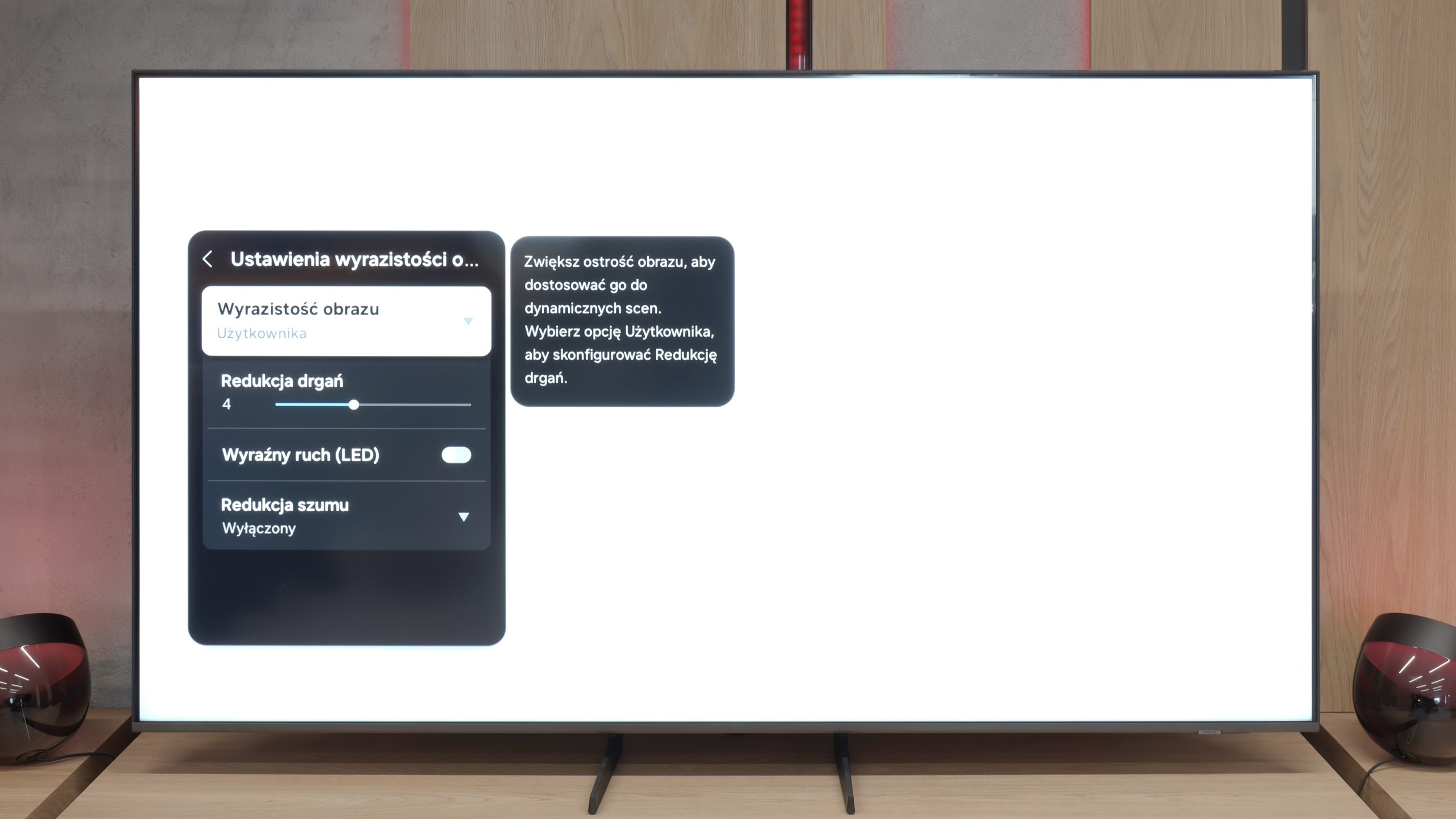
Blur (native resolution, maximum refresh rate):



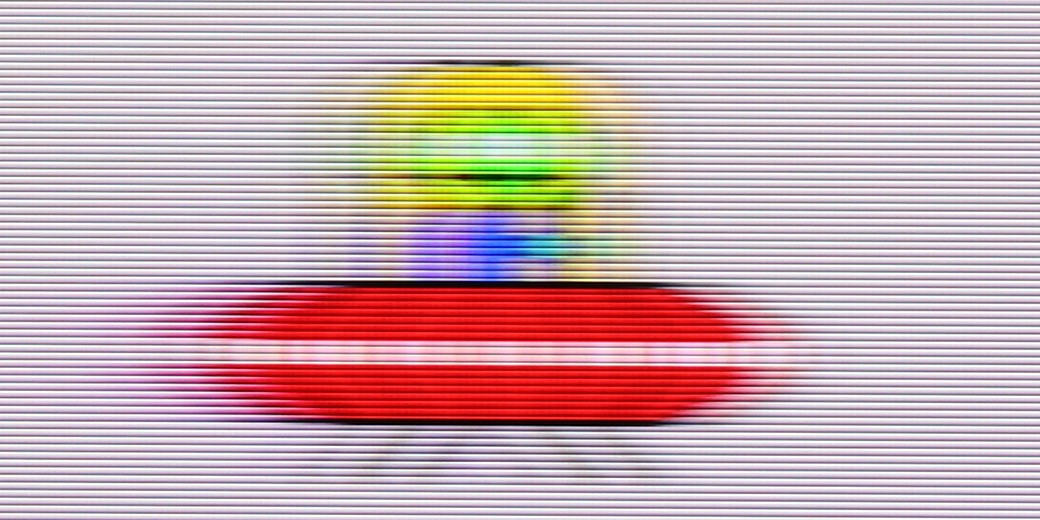
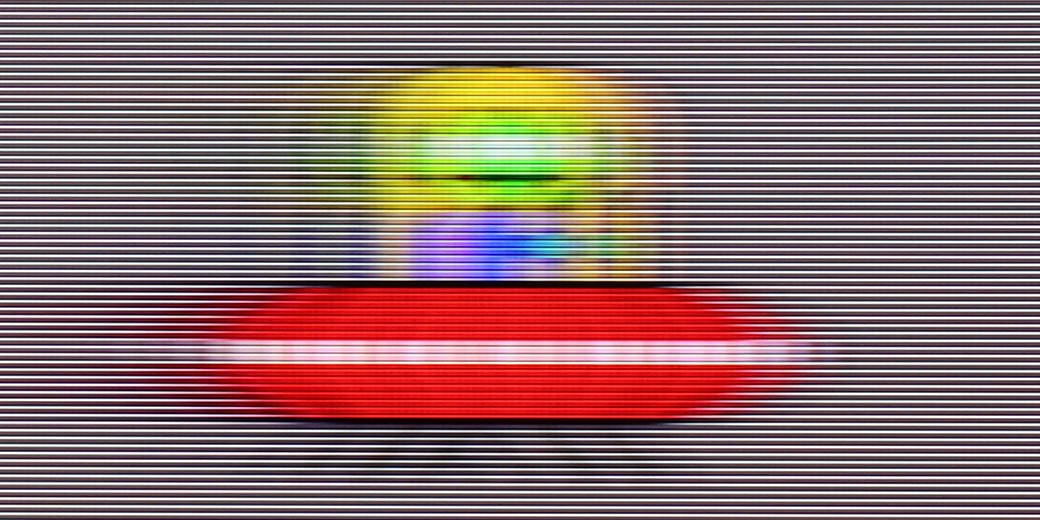
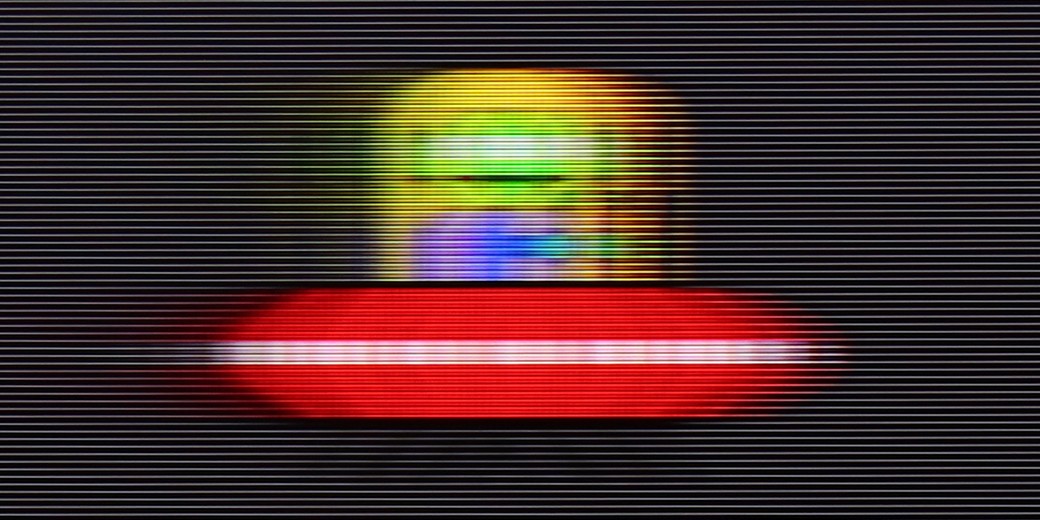
Blur (BFI function enabled):
Image flickers in this mode






Samsung Q70D is the first model in the manufacturer's portfolio featuring a 120Hz panel. Consequently, its motion smoothing functions are more advanced than those in lower-tier models. Within the menu, we find three functions responsible for improving smoothness: "Motion Blur Reduction," "Judder Reduction," and "Clear Motion (LED)." We will discuss the third one later. The first function is responsible for sharpness in motion, while the second adjusts the level of smoothing. The smoother in Samsung Q70D performs satisfactorily, and each setting brings noticeable changes. Therefore, those who dislike the characteristic juddering in films or are avid sports viewers will be able to achieve a personalised level of smoothing. In the picture, we present a setting with slight smoothing, without the soap opera effect.
The panel used in Samsung Q70D features a fairly good response time for this type of display. Of course, it won't be as sharp as a proverbial razor, but at this price, it is a recommendable choice for all kinds of sports.
Due to the applied 60 Hz matrix, it is difficult to call the Q8F a television designed for gaming or watching sports. The panel is not particularly fast, which makes motion blur noticeably visible. If you were hoping for spectacular, even 'stadium-like' experiences during broadcasts, you may feel slightly disappointed. Fortunately, in the case of films and series, Samsung has not abandoned the motion blur reduction feature. This is nothing but a motion smoother that allows you to improve the fluidity of productions recorded at 24 or 30 frames per second. This way, you can decide for yourself whether you prefer a smoother, 'television' image or to maintain a cinematic character. It all depends on the viewer's preferences, and the ability to adjust this parameter is undoubtedly a plus.
Console compatibility and gaming features
9.5/10
3.7/10
- ALLM
- VRR
- VRR range48 - 120Hz
- Dolby Vision Game Mode
- Correct implementation of HGIG
- 1080p@120Hz
- 1440p@120Hz
- 4K@120Hz
- Game bar

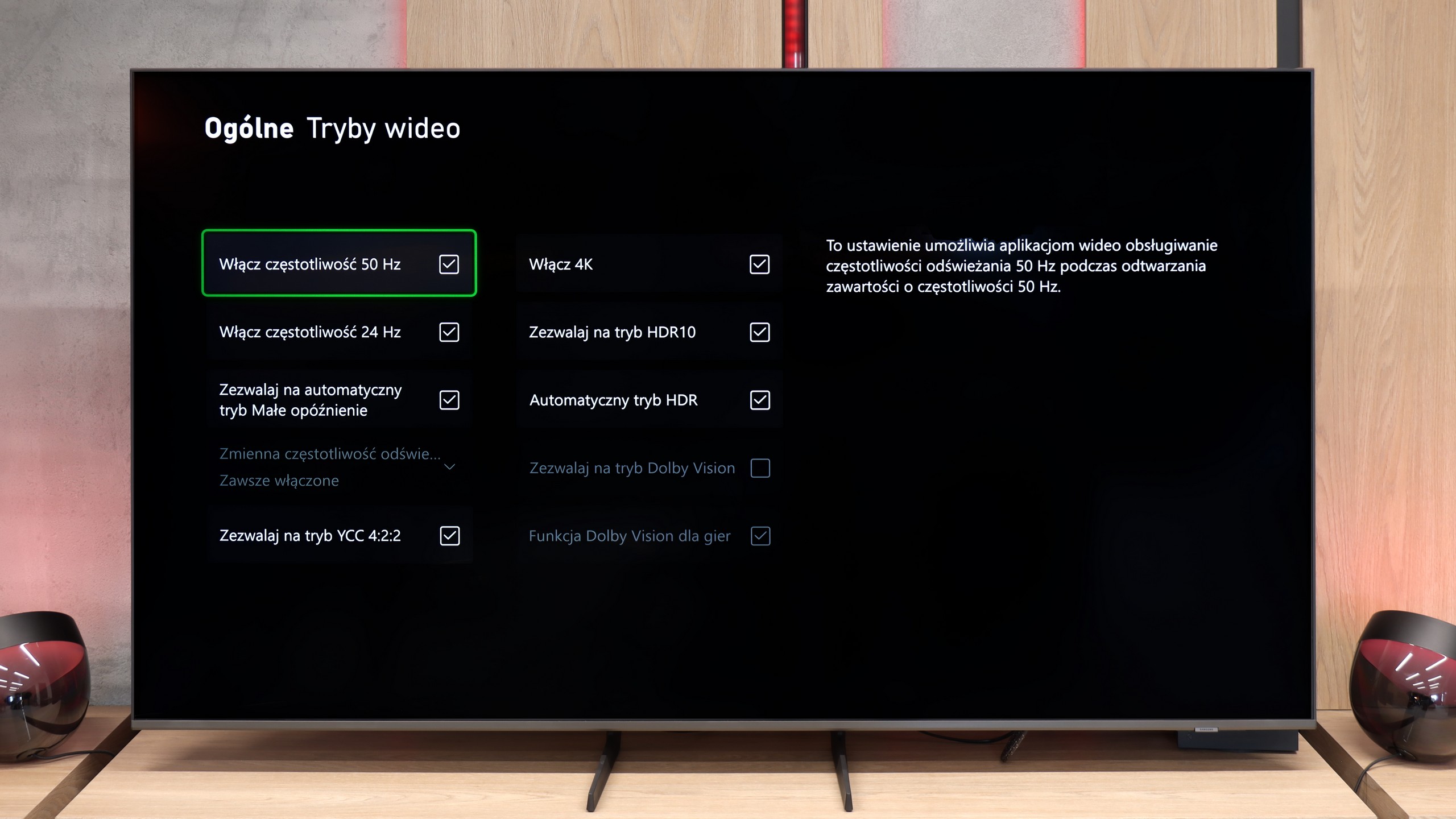

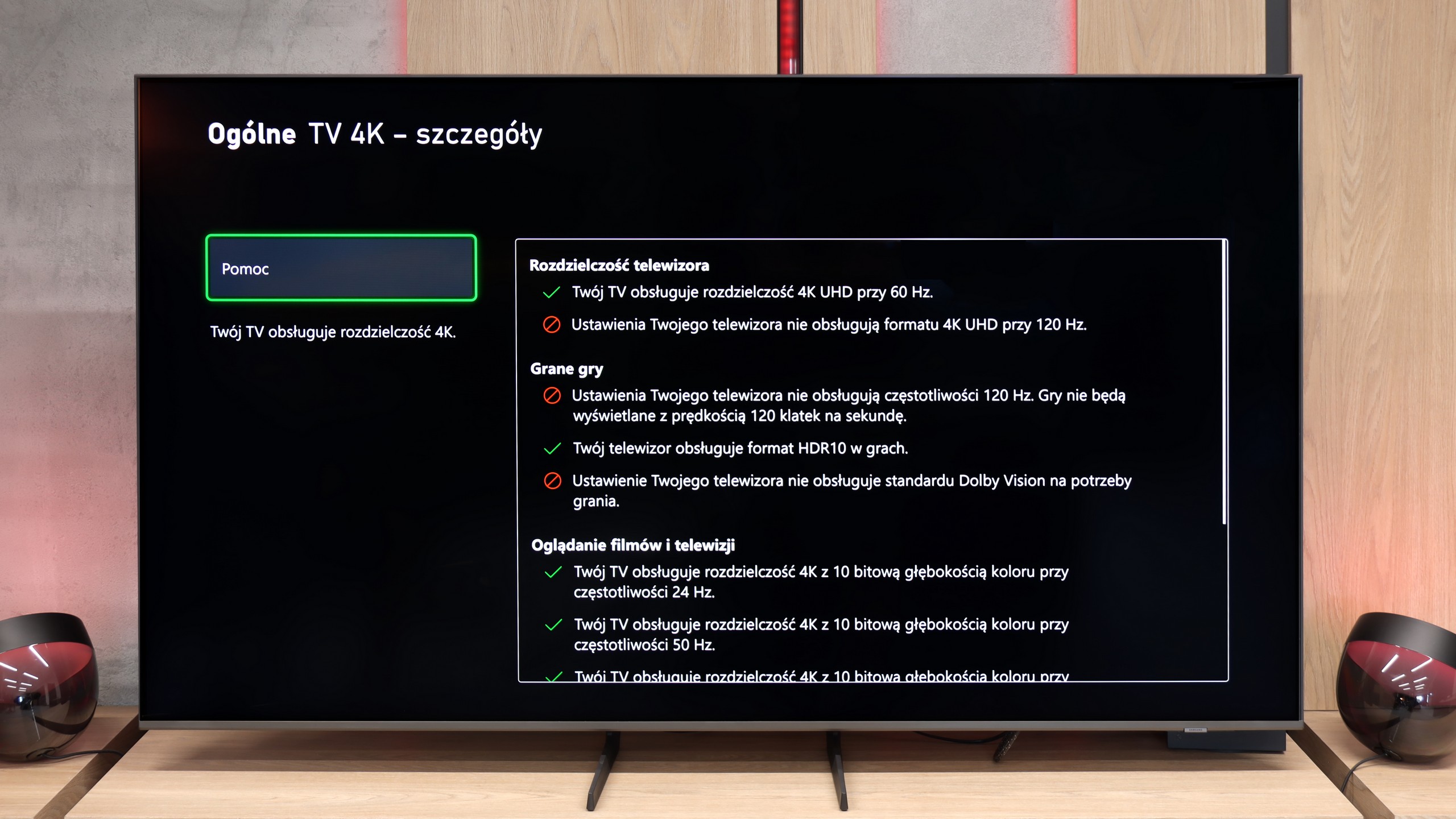

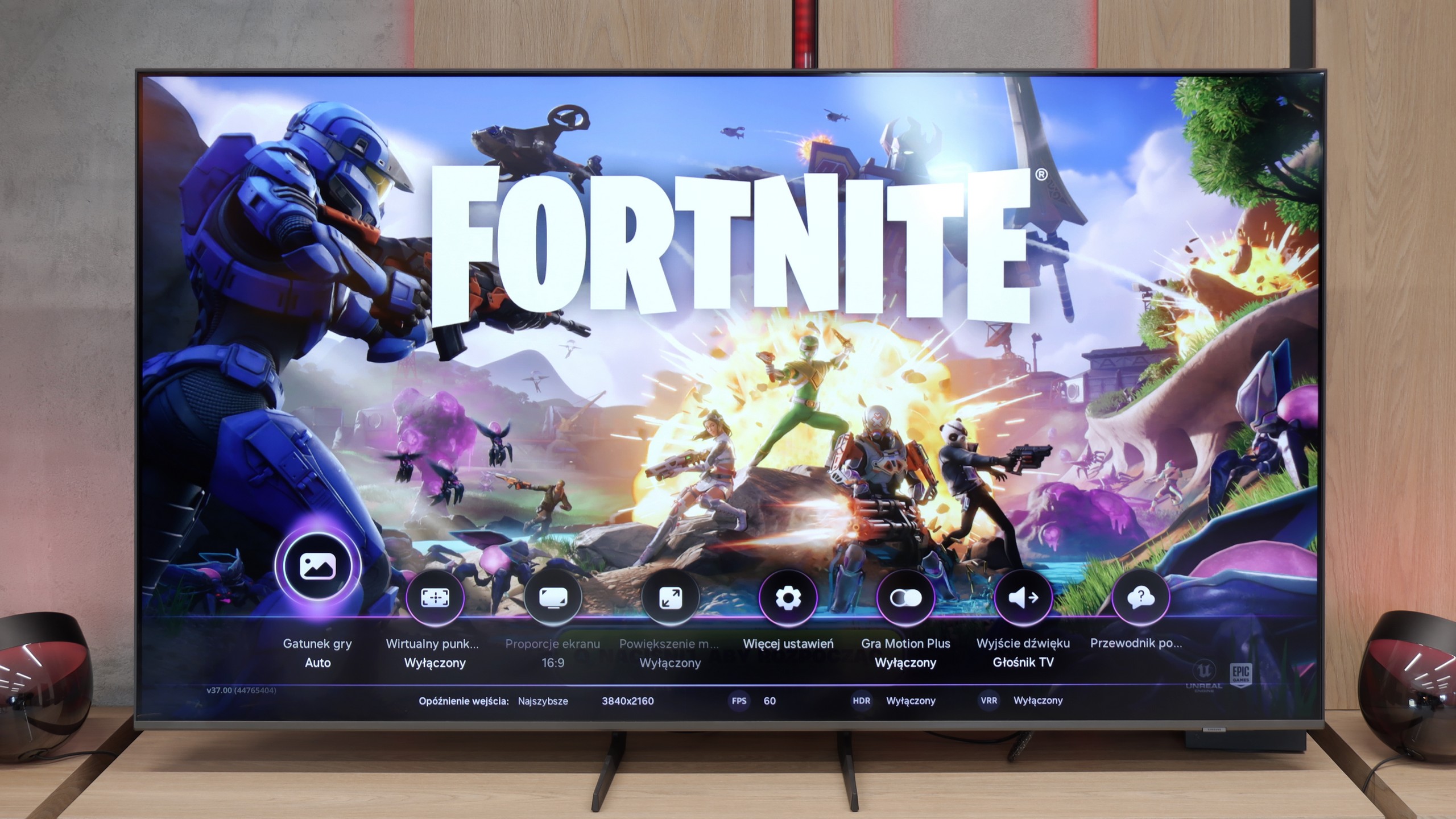

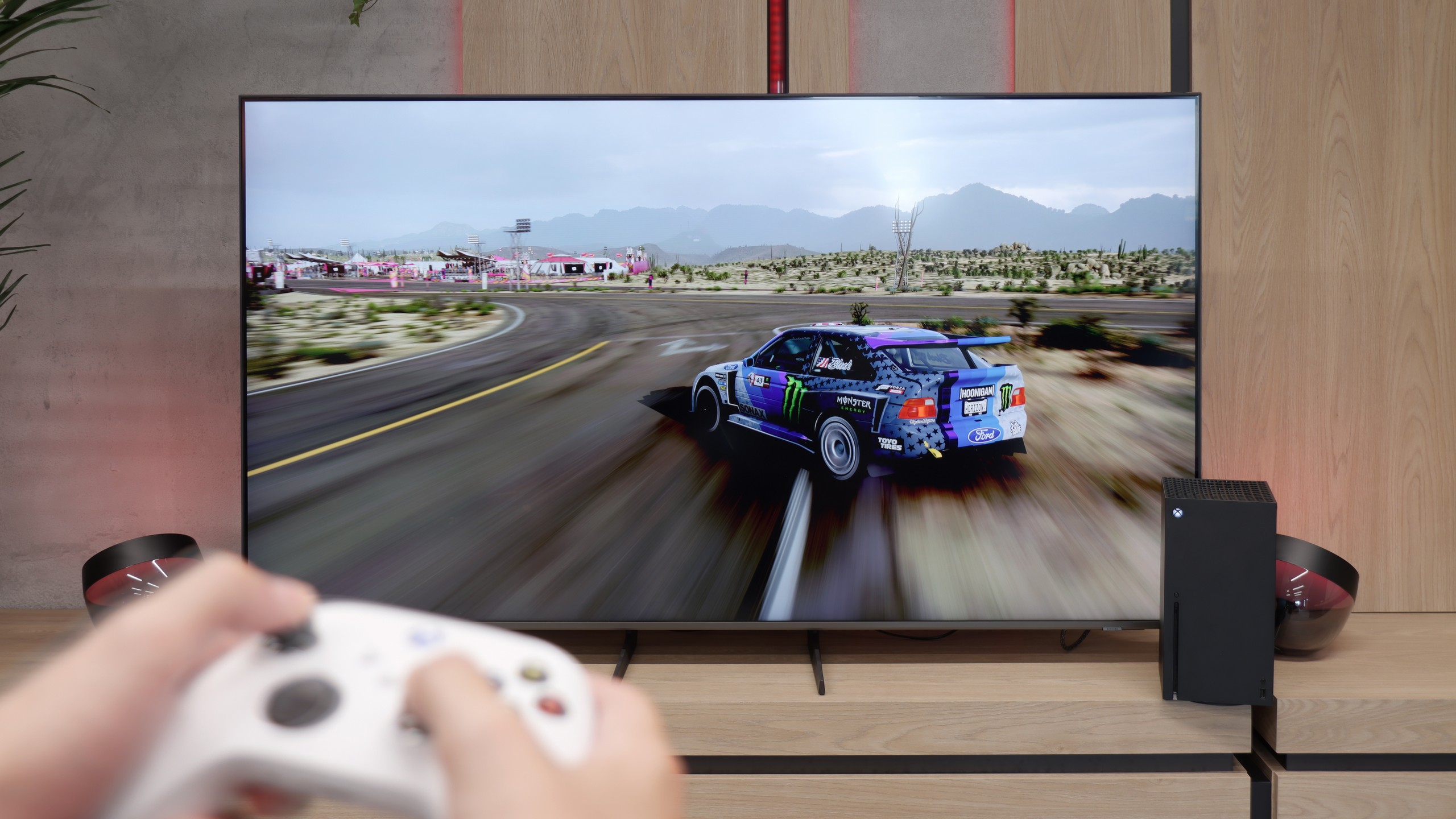
The tested television is equipped with four HDMI 2.1 ports. Interestingly, all of them have a bandwidth of 40 Gbps; however, during the conducted tests, we did not find any negative effects related to this state of affairs. Moreover, and more importantly, Samsung Q70D supports all functions resulting from the aforementioned standard. This news will surely please all gamers, as it means that whether using a console or a PC, we can count on the highest possible comfort during gameplay. Given the typical absence of HDR Dolby Vision for this manufacturer, it is significant that the HGIG mode has been correctly implemented and there is no issue with setting the calibration checkerboard. We particularly note that Samsung, as the only manufacturer, allows gameplay with the smoothener turned on, without significant degradation. This means that titles running at 30 fps will be perceived like those with native 60 frames per second.
Samsung, as one of the first manufacturers, introduced the Game Bar to its televisions, which it has consistently refined since then. It contains all the necessary information regarding gameplay parameters that we can change "on the fly".
To summarise: Samsung Q70D performs excellently both with a console and a computer. All functions worked perfectly and there were no issues with them. The ability to enable the smoothener without a significant increase in input lag is a true game changer.
It is not entirely clear what Samsung has meddled with this year regarding its televisions, but the Q8F is not free from all the confusion surrounding updates and shortcomings. While its older cousin, the Q67D, could still be recommended to casual gamers with a clear conscience, it is difficult to find a reason to do so here. Apart from the automatic game mode and the attractively designed Game Bar, we receive practically nothing that could attract gaming enthusiasts. The lack of proper HGiG implementation is a significant issue, especially since after the 1126 update, the feature simply disappeared. The situation regarding VRR is even worse. Although it is listed in the manufacturer's brochures and appears in the Game Bar, we were unable to activate it. The Xbox Series X console did not allow activation at all, and the option remained greyed out and inactive. It is hard to praise such a television even to casual gamers, which is a pity, as Samsung had a strong bargaining chip in the gaming segment for years.
Input lag
10/10
9.9/10
SDR
HDR
Dolby Vision
The latency results in Samsung Q70D are at a high level, regardless of the signal or resolution. All gamers will certainly appreciate the manufacturer's efforts, which allow for a game running in 4K 120 Hz with HDR to have a mere 7 ms latency, which is virtually unnoticeable even in online games. It is worth adding that the lag with the smoothness enhancer switched on increases by about twice, which still means very comfortable gaming in this case.
Fortunately, in terms of gaming, Samsung did not attempt to 'enhance' anything and the input lag remained at an excellent level. Results hovering around 10–15 ms mean that delays are practically imperceptible. The controls are instant, and the responses from the console or computer appear on the screen with no noticeable delay. In this respect, the Q8F performs excellently and it is difficult to fault it in any way.
Compatibility with PC
8/10
6/10

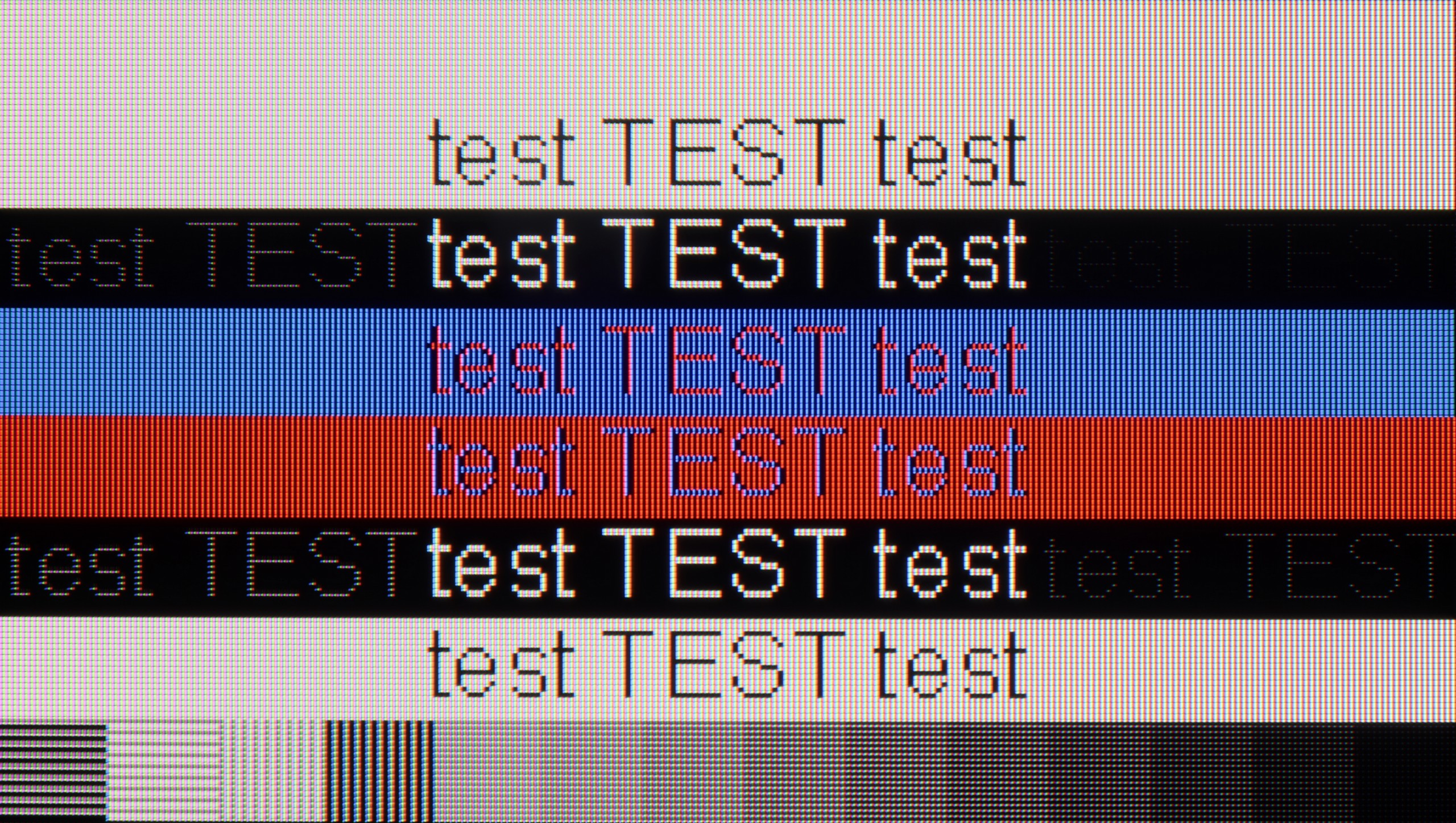
After connecting the television to the computer and wanting to use it as a monitor, we can expect a low input lag of 13 ms, which is practically unnoticeable along the mouse-screen-eye line. Thanks to the correct implementation of chroma 4:4:4, the readability of fonts is at a high level, so one can confidently connect the Samsung Q70D to the computer as a monitor and anticipate comfortable work with text.
The subpixel arrangement is BGR, which does not negatively impact the use of the television as a monitor. However, since operating systems are not adapted to such a subpixel format, this may cause slightly less clear outlines. Nevertheless, this is practically negligible and only a handful of people may notice it.
Although gaming on the Q8F is not particularly attractive — there are no modes with lower resolution and higher refresh rates, and it also has issues with VRR (G-Sync) as well as a limitation of the panel to 60 Hz — it performs excellently as a work monitor. The readability of the fonts is very high, so working with text or Excel spreadsheets is a pure pleasure. In this regard, the Q8F can be a real alternative to a large office monitor.
Viewing angles
2.9/10
3.4/10
Due to the VA panel, the performance of the Samsung Q70D in terms of viewing angles is its Achilles' heel. Even a slight shift from the axis results in a significant loss of contrast and a substantial degradation of colours.
The viewing angles on the Q8F can be described as average, which is due to the use of a VA panel. When watching the television straight on, the picture looks very good, but just moving slightly to the side causes it to start fading and losing contrast. Colours gradually lose their saturation, and black takes on a shade of grey. This is a typical limitation of this type of panel, and one cannot expect miracles here. Compared to IPS panels, the difference is clear — although they are weaker in contrast, they hold colour better at an angle. The Q8F will perform best in a classic setup, where viewers are seated centrally in front of the screen. If you plan to watch with a larger group, with people spread out across the living room, the effect may not be as satisfying.
TV efficiency during daytime
5.4/10
5.6/10

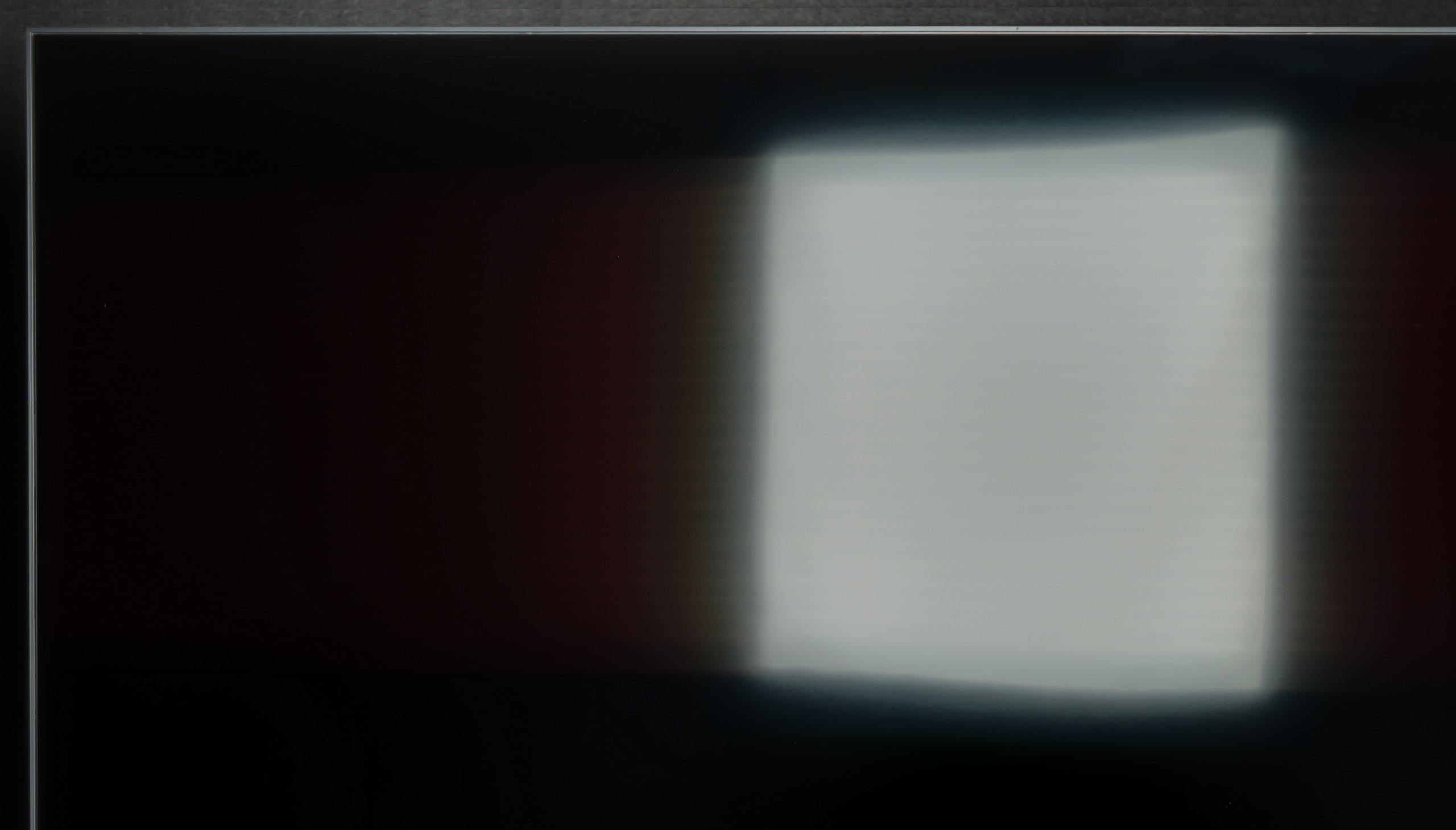

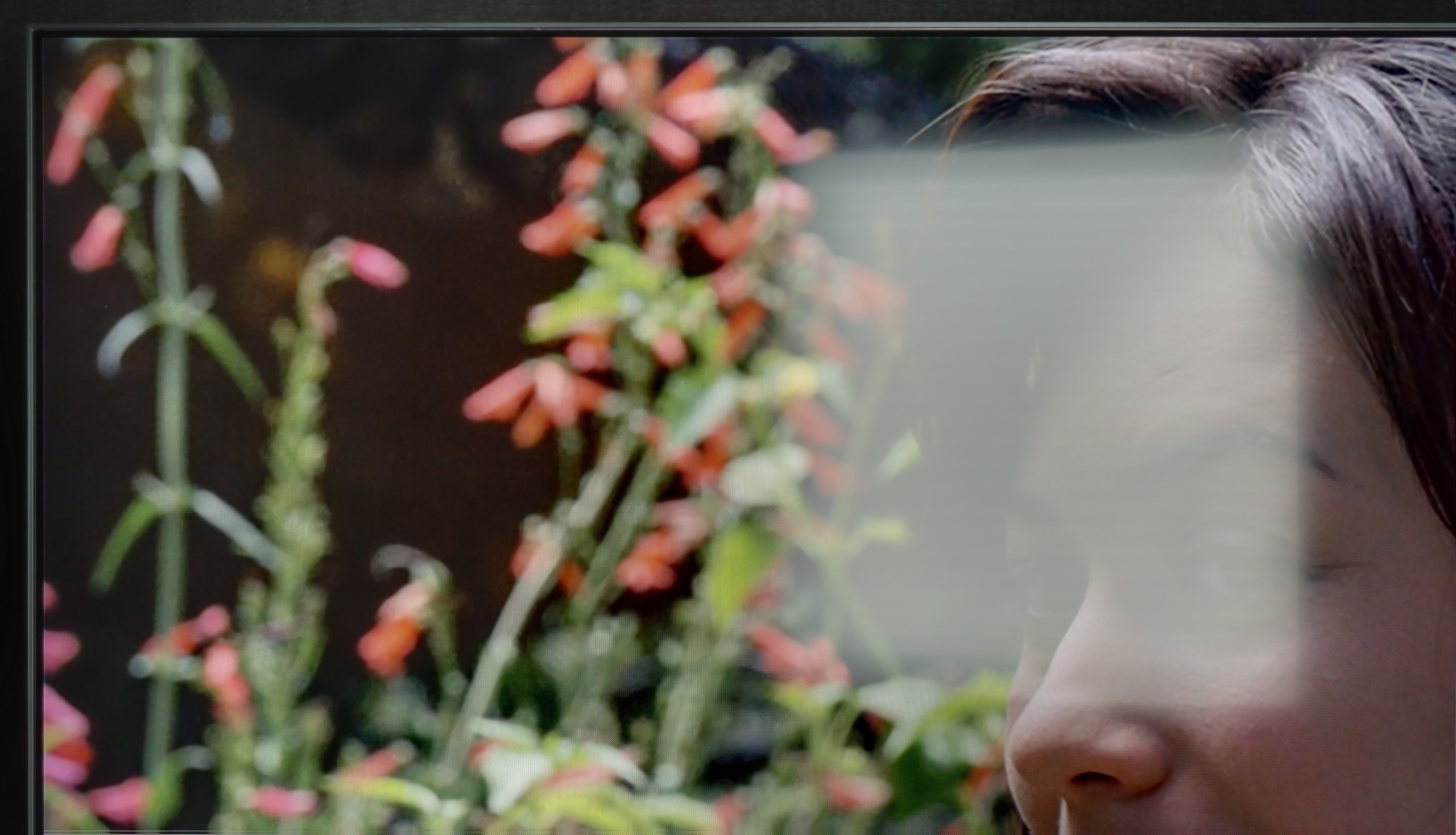
Matrix brightness
Average luminance SDR
Samsung Q8F: 430 cd/m2
Samsung QLED Q70D / Q74D / Q77D: 449 cd/m2
The satin finish of the panel in the Q70D allows for quite good performance in a strongly sunlit room. It is worth noting that the reflections do not extend beyond their source, thus not spilling over onto the rest of the panel. We also commend the maximum brightness of the television in SDR materials, which is 450 nits, allowing for comfortable content consumption during the day.
The Q8F performs quite well during the day. Its brightness hovers around 450 nits, which proves to be a sufficient level for moderately bright living rooms. It is not a television that will win a battle against sunlight streaming directly through the window, but under typical home conditions, the picture remains clear and appealing. A significant advantage is the satin finish of the panel, which effectively reduces reflections and helps maintain colour saturation even when the room is bright. As a result, watching series during the day or evening sports broadcasts with the lights on poses no problems. The Q8F does not aspire to be a cinema television in full sunlight, but as an everyday screen in normal home conditions, it performs really well.
Details about the matrix
Subpixel Structure:

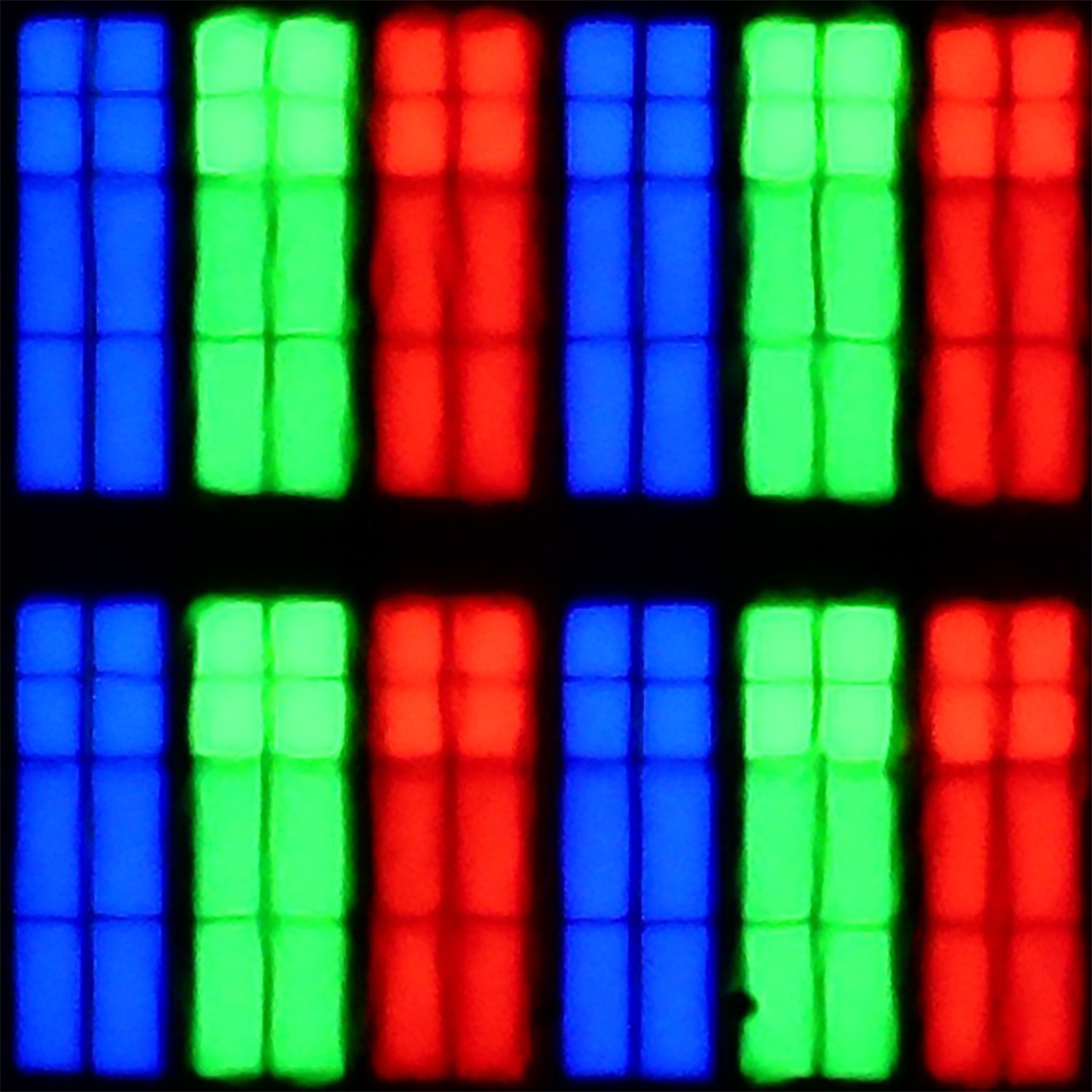
Panel uniformity and thermal imaging:

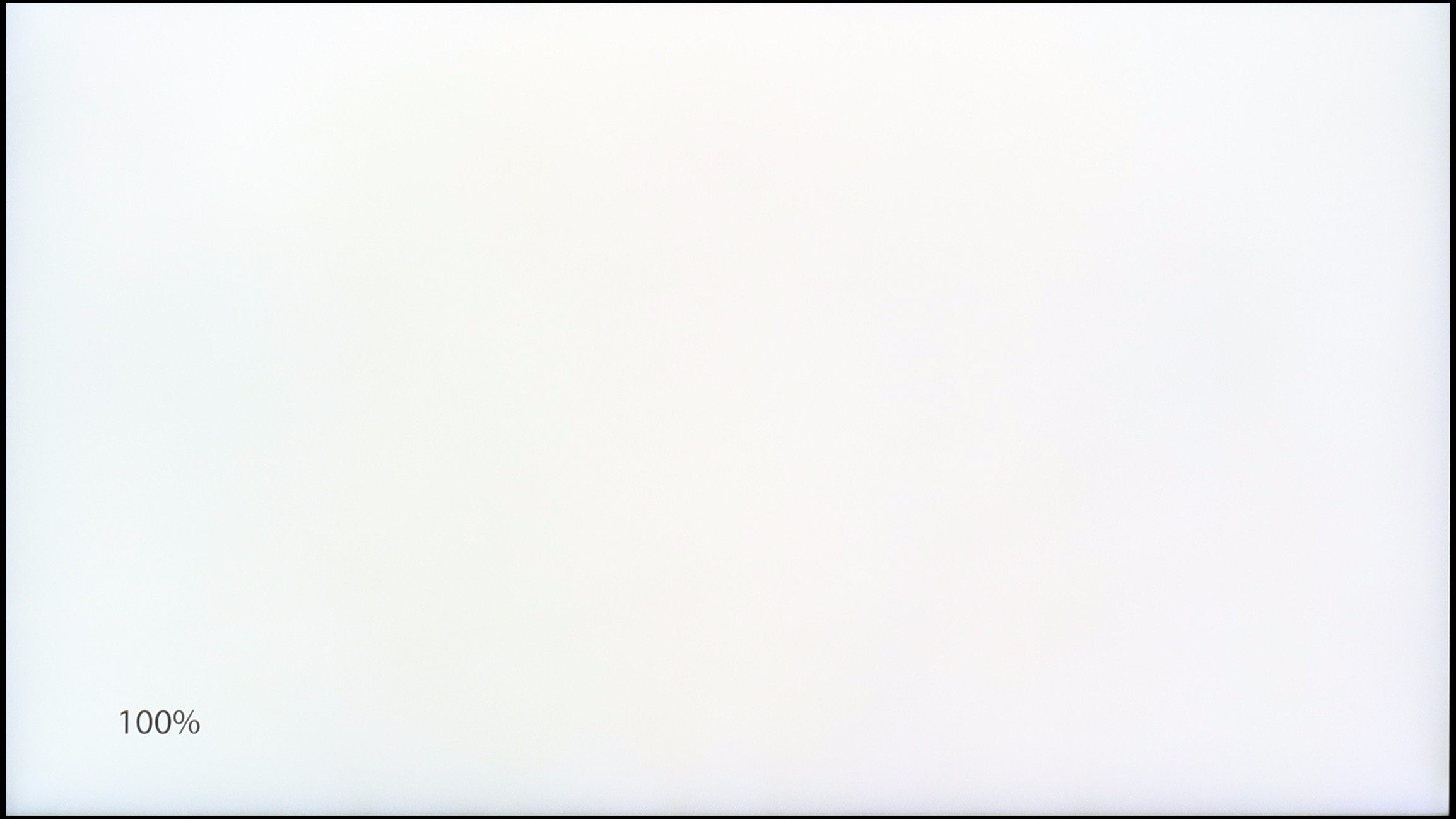
Samsung QLED Q70D / Q74D / Q77D
Samsung Q8F
TV features
7.4/10
7.3/10
- HDMI inputs0 x HDMI 2.0, 4 x HDMI 2.1 40Gbps3 x HDMI 2.0, 0 x HDMI 2.1
- OutputsToslink (Optical audio), eARC (HDMI), ARC (HDMI)Toslink (Optical audio), eARC (HDMI), ARC (HDMI)
- Network InterfacesWi-Fi 2.4GHz, Wi-Fi 5GHz, Ethernet (LAN) 100MbpsWi-Fi 2.4GHz, Wi-Fi 5GHz, Ethernet (LAN) 100Mbps
- TV receptionDVB-T, DVB-T2, DVB-S, DVB-S2, DVB-CDVB-T, DVB-T2, DVB-S, DVB-S2, DVB-C
Classic features:
- Recording to USB (terrestrial TV)
- Recording programming
- Picture in Picture (PiP)
- RF remote control (no need to aim at the screen)
- Backlit remote control
- Teletext
- Audio only mode
- Bluetooth headphones support
- Simultaneous Bluetooth headphones & TV audio
Smart features:
- AirPlay
- Screen mirroring (Windows Miracast)
- Voice search
- Voice search in native language
- Ability to connect a keyboard and mouse


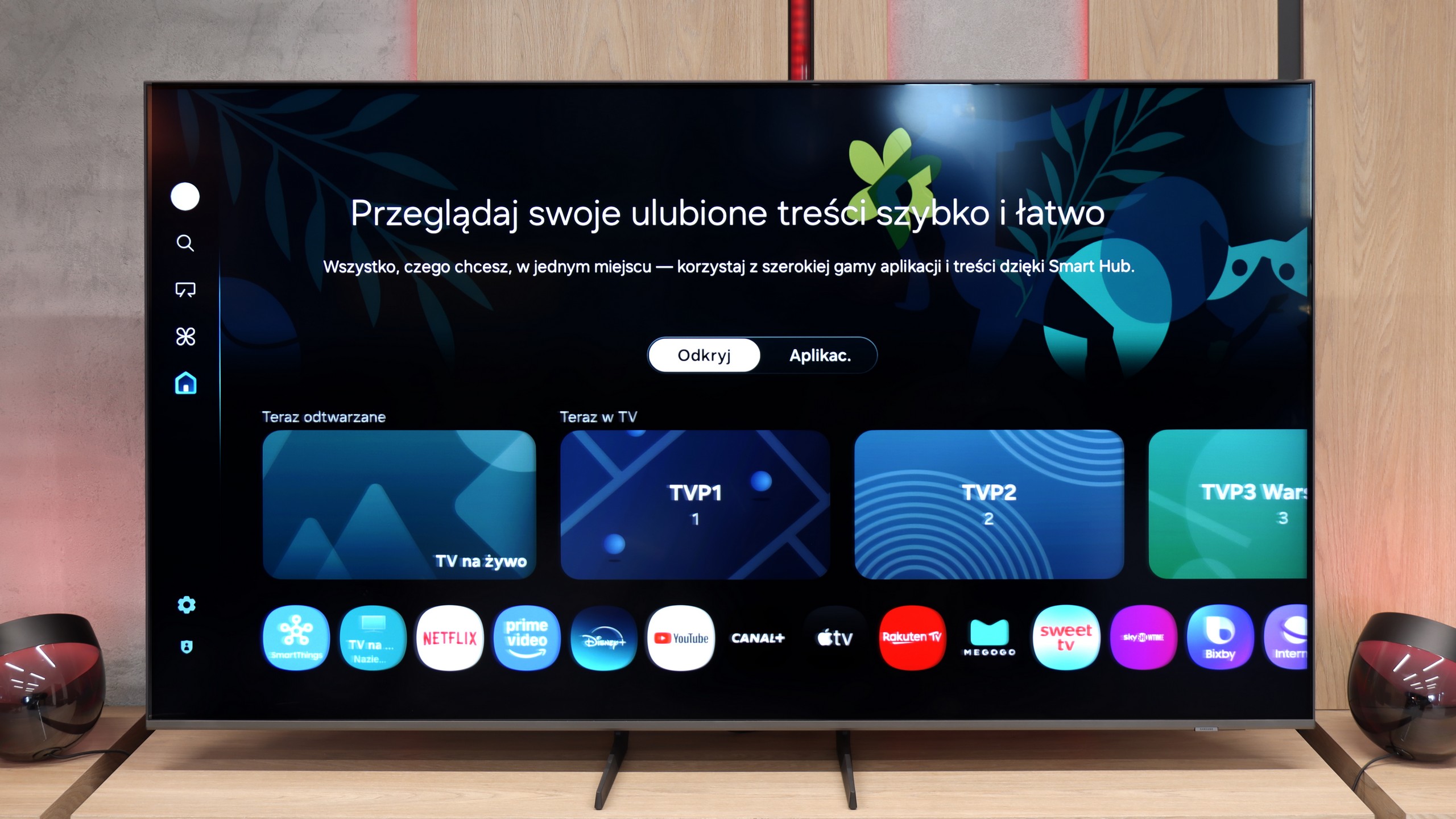
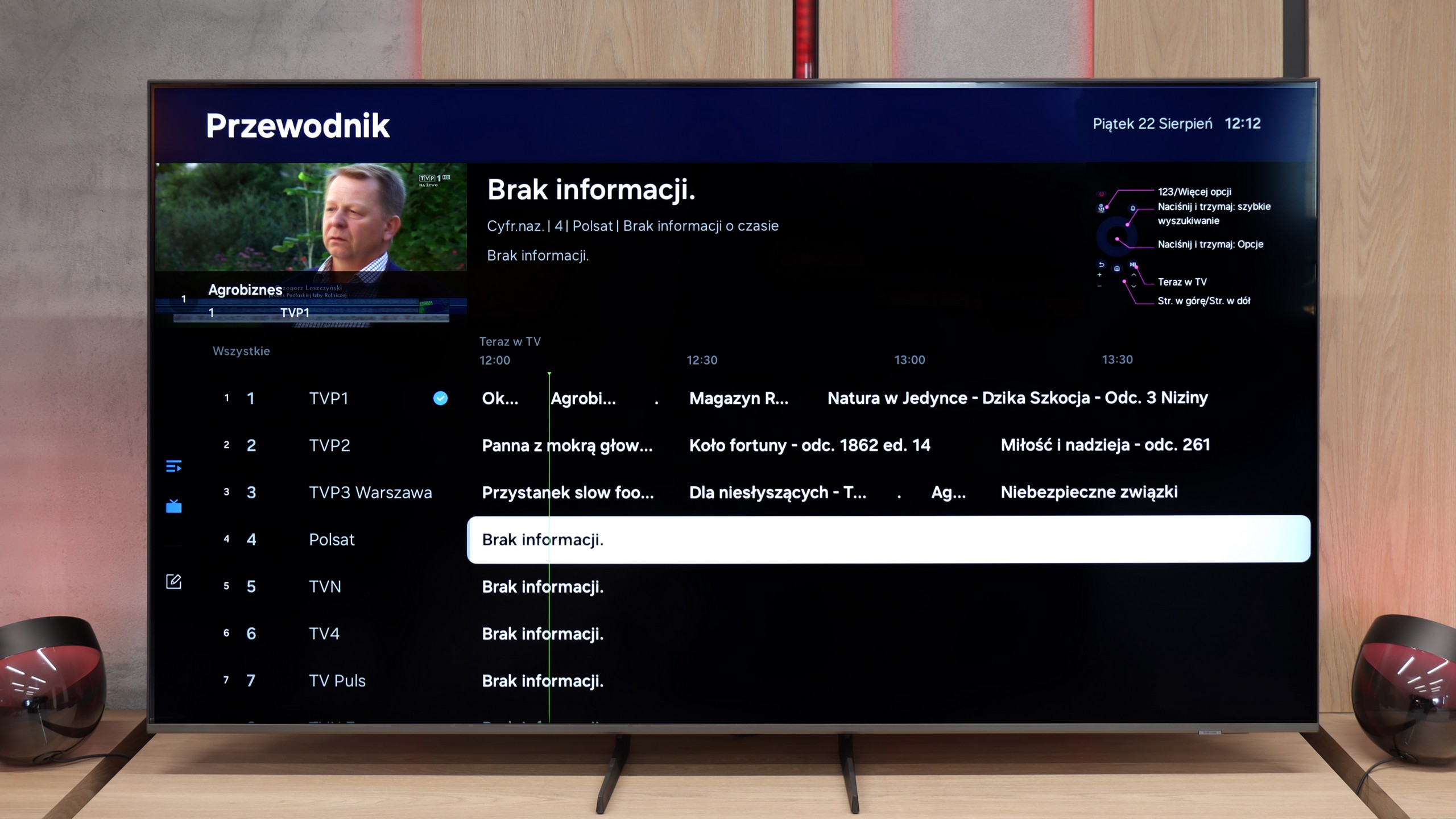
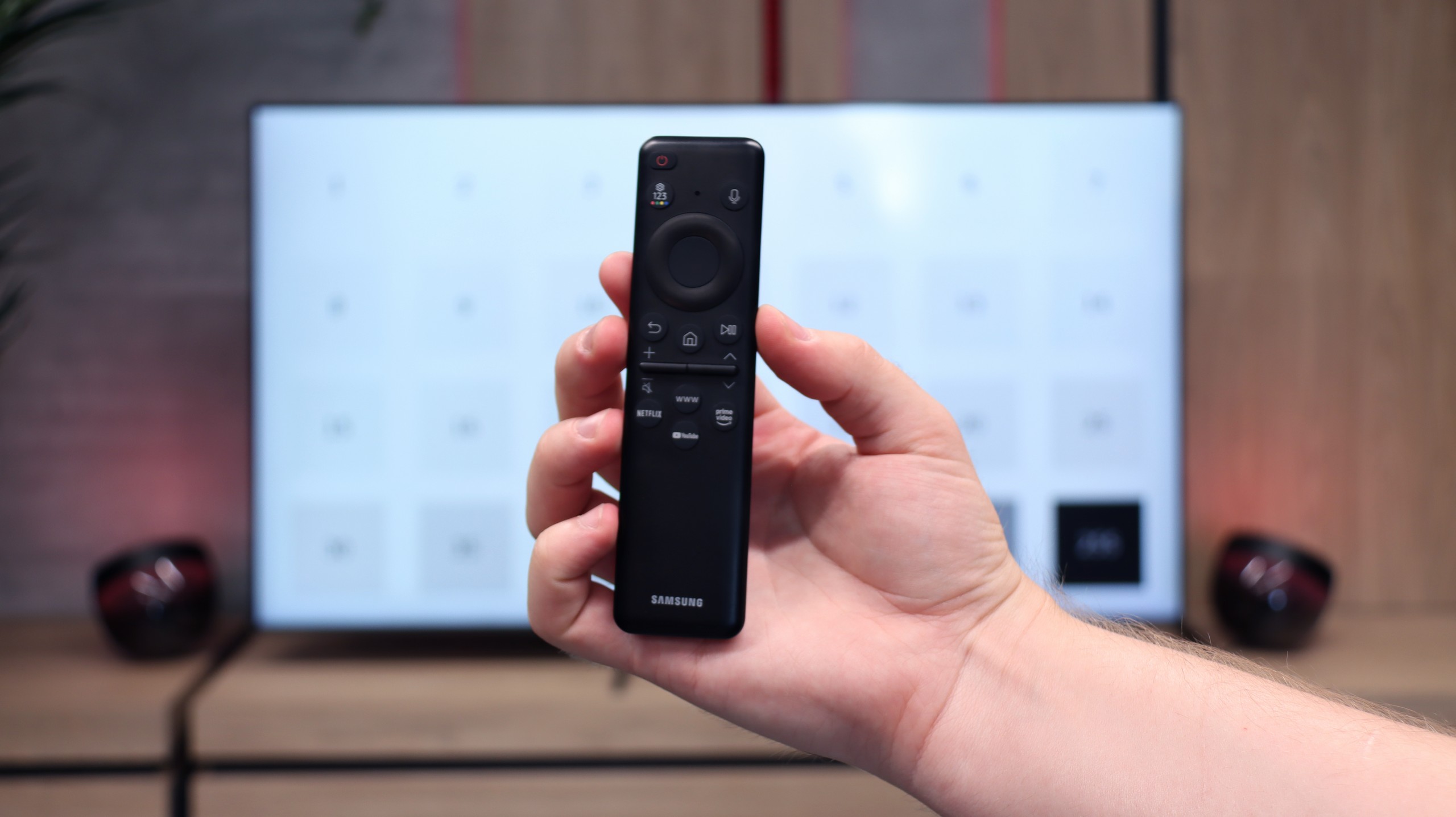
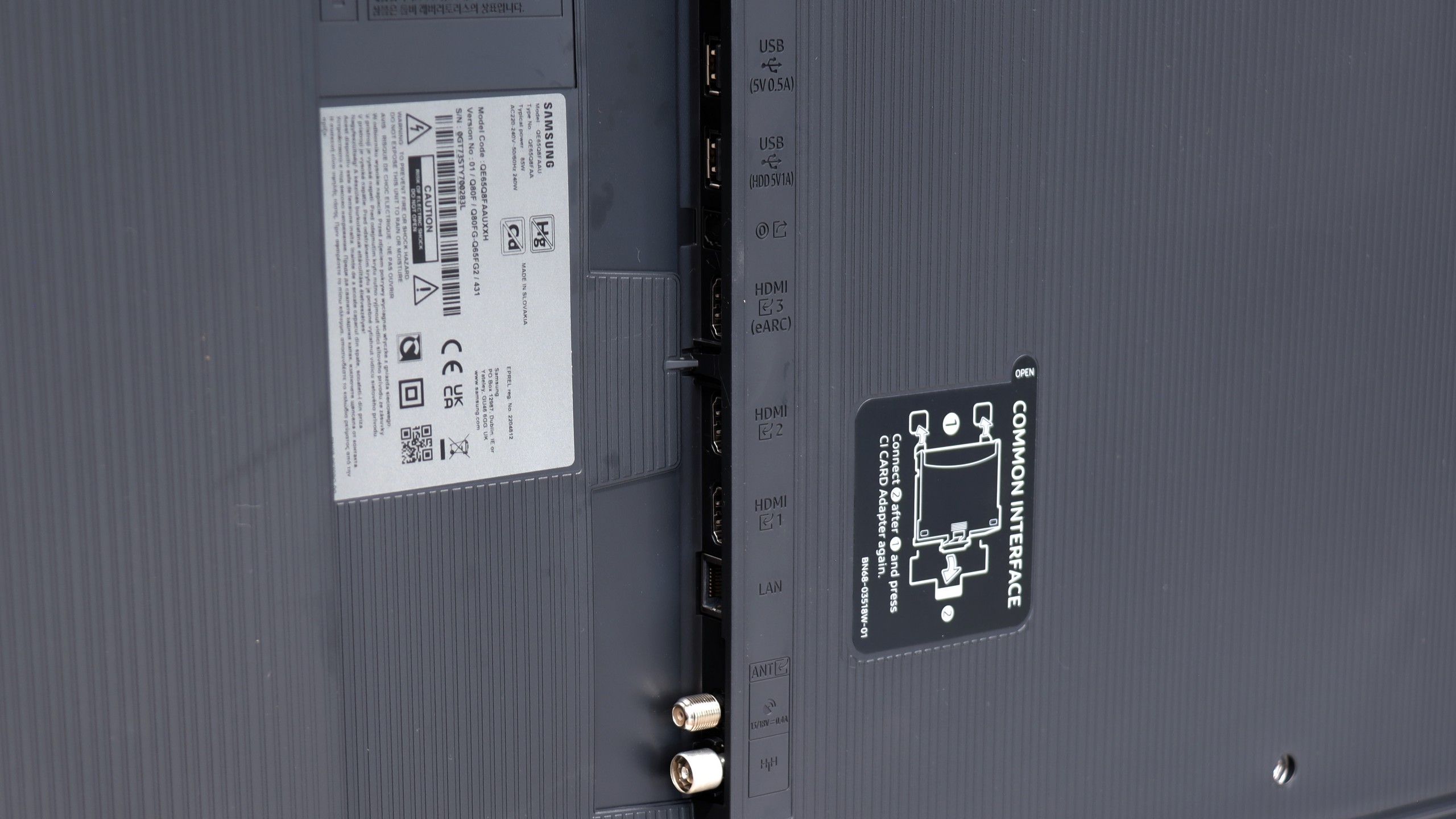
The operation of the Samsung Q70D is powered by the proprietary Tizen system. It is quite a well-known software, as the manufacturer has been developing it in its televisions for a really long time. Its main advantage is smooth performance and the absence of significant stutters, which we can confirm through conducted tests. The greatest downside, however, is its closed nature. Although the app store is quite extensive, we are still at the mercy of the manufacturer. Therefore, we will not be able to install missing items, even from a pendrive. A perfect example of this is this year's discontinuation of support for the Tidal app. On the other hand, a benefit, especially for users of Apple equipment, is the implementation of AirPlay, which allows for easy mirroring of content from a device to the television. Fortunately, Samsung has also provided the option to connect a keyboard and mouse for much quicker navigation through the television's menu. It is worth mentioning that the manufacturer has luckily included a remote that connects via Bluetooth this year, which often did not occur in the past. The Tizen system has one more advantage. It integrates very well with external devices such as the NC+ decoder or soundbars. The connection process is very quick and does not require any special skills.
In summary: The Tizen system is very smoothly functioning software, which is certainly a strong advantage of the television. Although more advanced users may complain about the lack of at least KODI, the rest will be satisfied.
SmartTV Features: Tizen
In terms of smart features, the Q8F does not lag behind what Samsung has accustomed us to. On board, we have the Tizen system – fast, intuitive, and well integrated with other devices. AirPlay, screen mirroring, and simple voice commands work seamlessly, so the basics are checked off perfectly. Additionally, there is SmartThings, an app that turns the television into the centre of a home ecosystem. You can connect a washing machine, vacuum cleaner, light bulbs, or speakers and control everything from one place, including the television. There is also no shortage of apps within Tizen for watching films or series – Netflix, YouTube, Disney+, and Prime Video are readily available. However, it is worth noting that Tizen is a closed system, so anyone hoping to install less popular programmes may be disappointed.
Traditional Television
Traditional television fares worse. The Q8F will simply act as a screen here – it will display the image, but we won't find additional functions such as USB recording or PiP mode. The remote is small and strongly minimalist. It looks modern and can be charged with solar batteries on the back cover or via USB-C, but it must be recognized that it may not appeal to everyone – particularly older users may miss traditional buttons. However, it must be noted honestly that Samsung has been consistently steering its televisions (as has the competition, which copies some of their ideas) towards the smart home, rather than towards equipment "for grandparents." Considering the tremendous popularity of the brand, it can be assumed that most users, even the older ones, have already got used to the fact that the era of remotes with a full array of rubber buttons is slowly coming to an end.
Playing files from USB
9.1/10
9.1/10
Supported photo formats:
Maximum photo resolution:

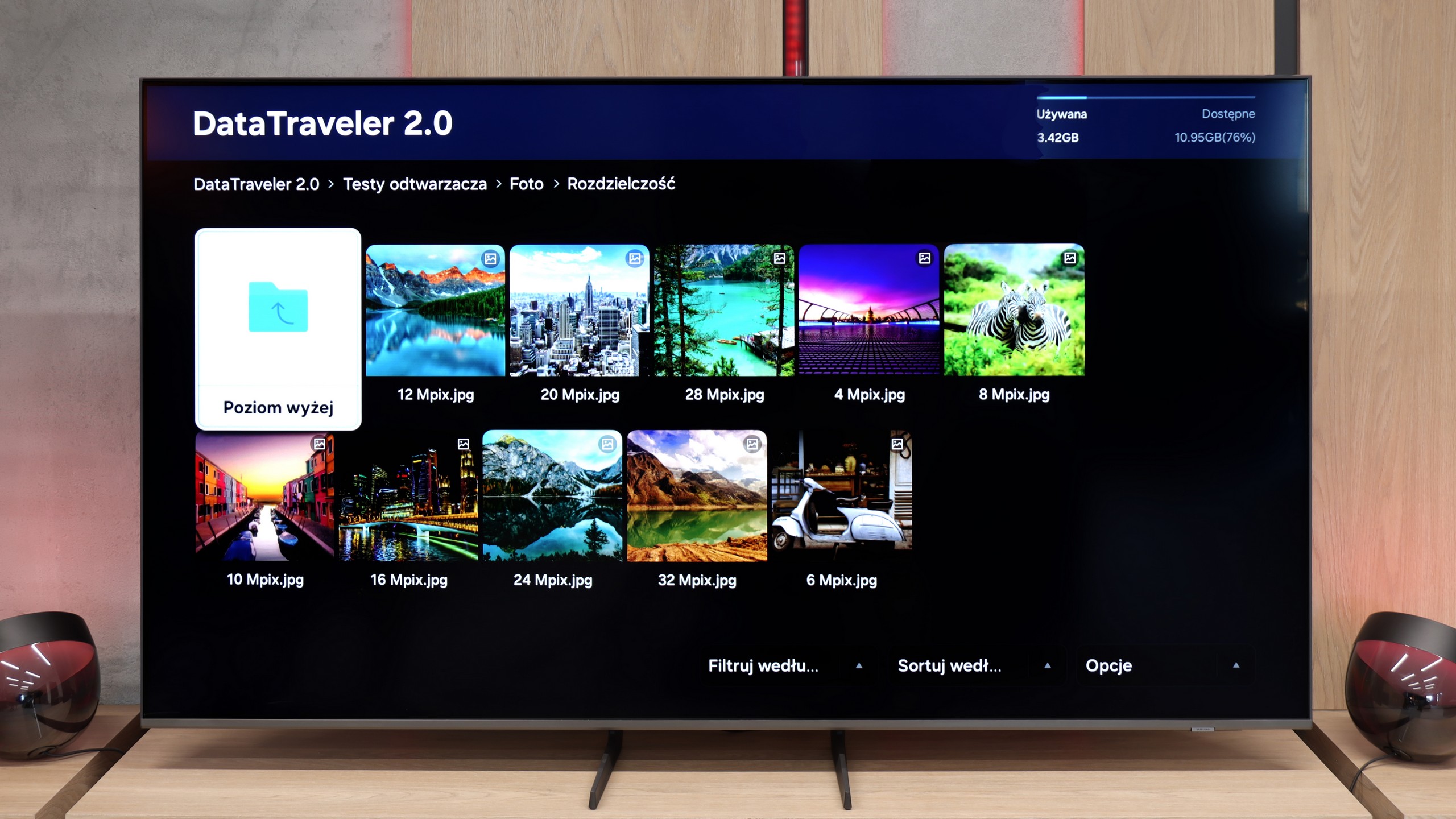
The built-in player Samsung Q70D is one of its major advantages. It handled almost all video and audio files prepared for the testing process excellently. The only exceptions in this regard are, of course, the Dolby Vision format (which is not surprising) and less popular codecs. Additionally, credit should be given for the support of Polish characters and the ability to change font colours. However, it performs worse with photo formats, as it only supports JPEG among the popular ones. There is definitely a lack of formats such as PNG or Apple's HEIC.
Samsung Q8F handles playing files from USB quite efficiently. It supports virtually all popular video formats as well as photos, so you can easily load a holiday video or a family album. There are occasional exceptions with less common photo formats, but the most important JPEG works perfectly, which will be crucial for the majority of users. It's just a pity that Tizen does not allow for the installation of alternative players, such as VLC. Even then, less popular formats would not pose any problem.
Apps
8.7/10
8.7/10














































Sound
6.3/10
6/10
- Maximum volume-84dB
- Dolby Digital Plus 7.1
- Dolby True HD 7.1
- Dolby Atmos in Dolby Digital Plus (JOC)
- Dolby Atmos in Dolby True HD
- DTS:X in DTS-HD MA
- DTS-HD Master Audio
The built-in audio system Samsung Q70D, due to its slim design, is not among the most outstanding. The overall sound is fairly balanced, although we wouldn't advise increasing the volume above 2/4 of the scale. However, if we have a home cinema system, a number of codecs await us, notably featuring the most important ones, namely DTS-HD Master Audio and Dolby Atmos.
The sound on the Q8F can be described as acceptable. A slightly defined bass can be heard, but it is really minimal – the slim design of the television simply does not provide space for the pair of 2 × 10 W speakers to spread their wings. This is a typical scenario for most televisions: if someone cares about truly cinematic experiences, it is worth considering a soundbar. Samsung has a really wide range in this category across various budgets, so it's easy to find something suitable. The television itself will work for watching classic TV and series from time to time, but for greater sound excitement, one should not expect much.
Acoustic Measurements
No acoustic data
84dBC (Max)
75dBC
